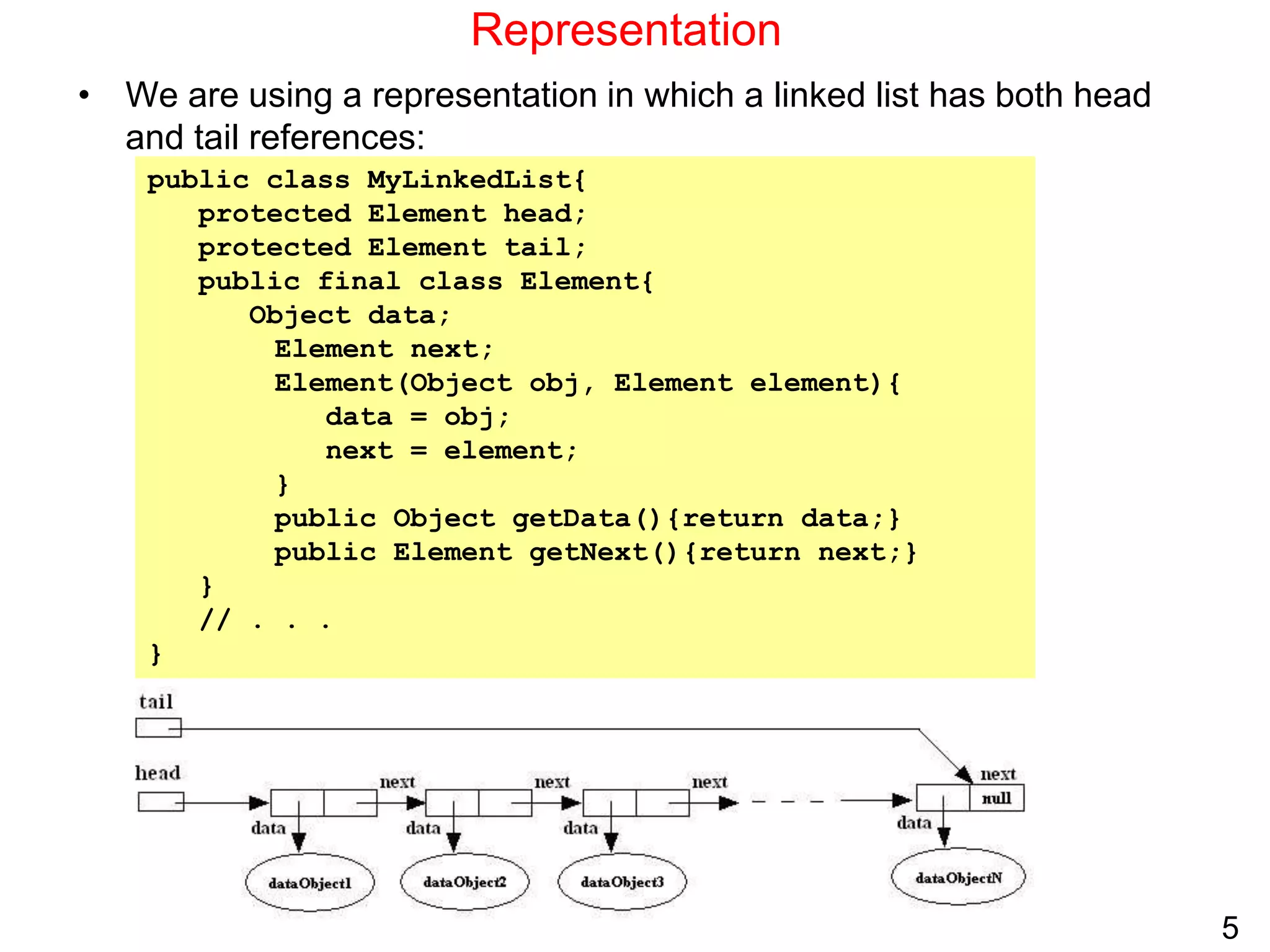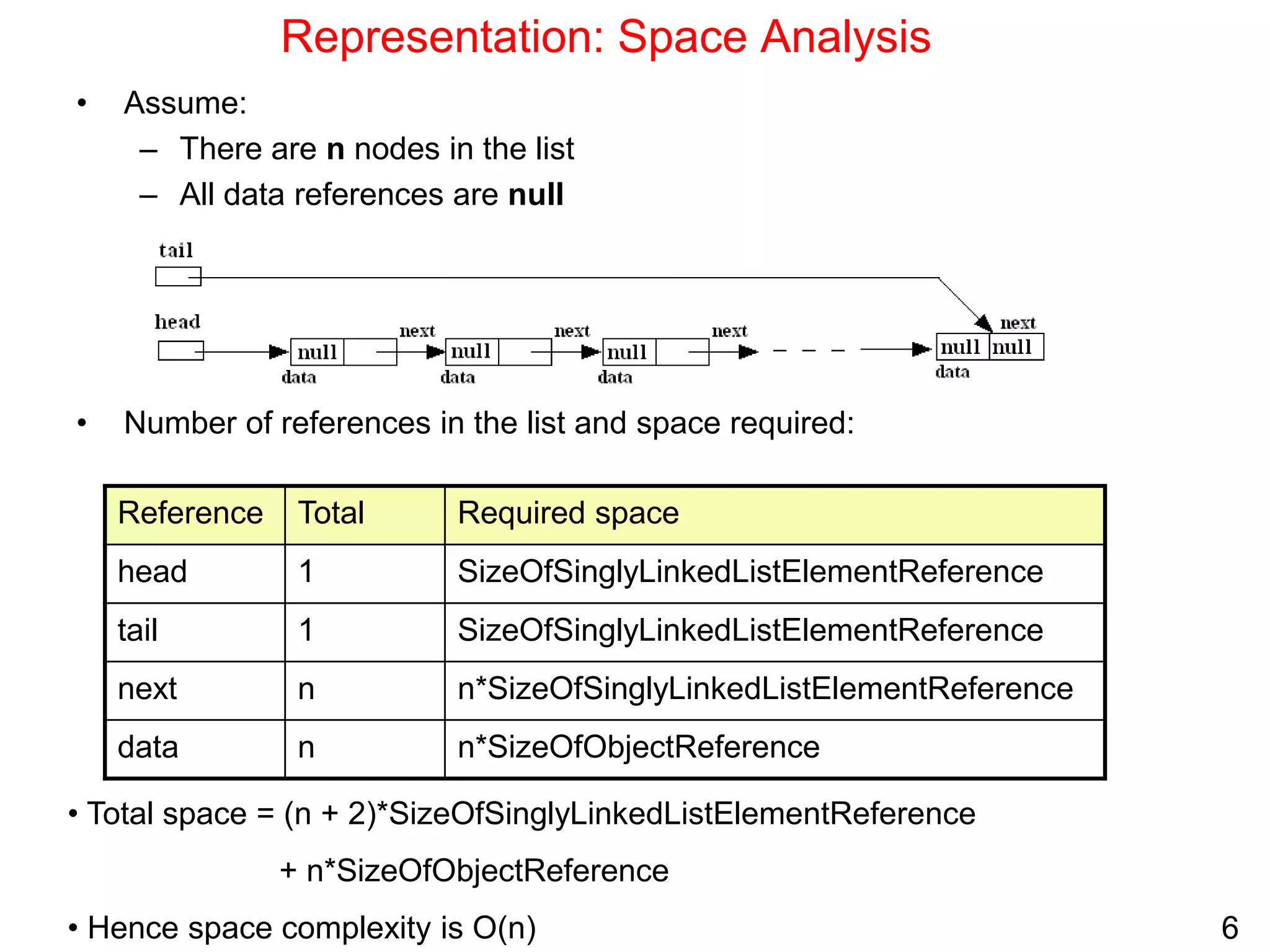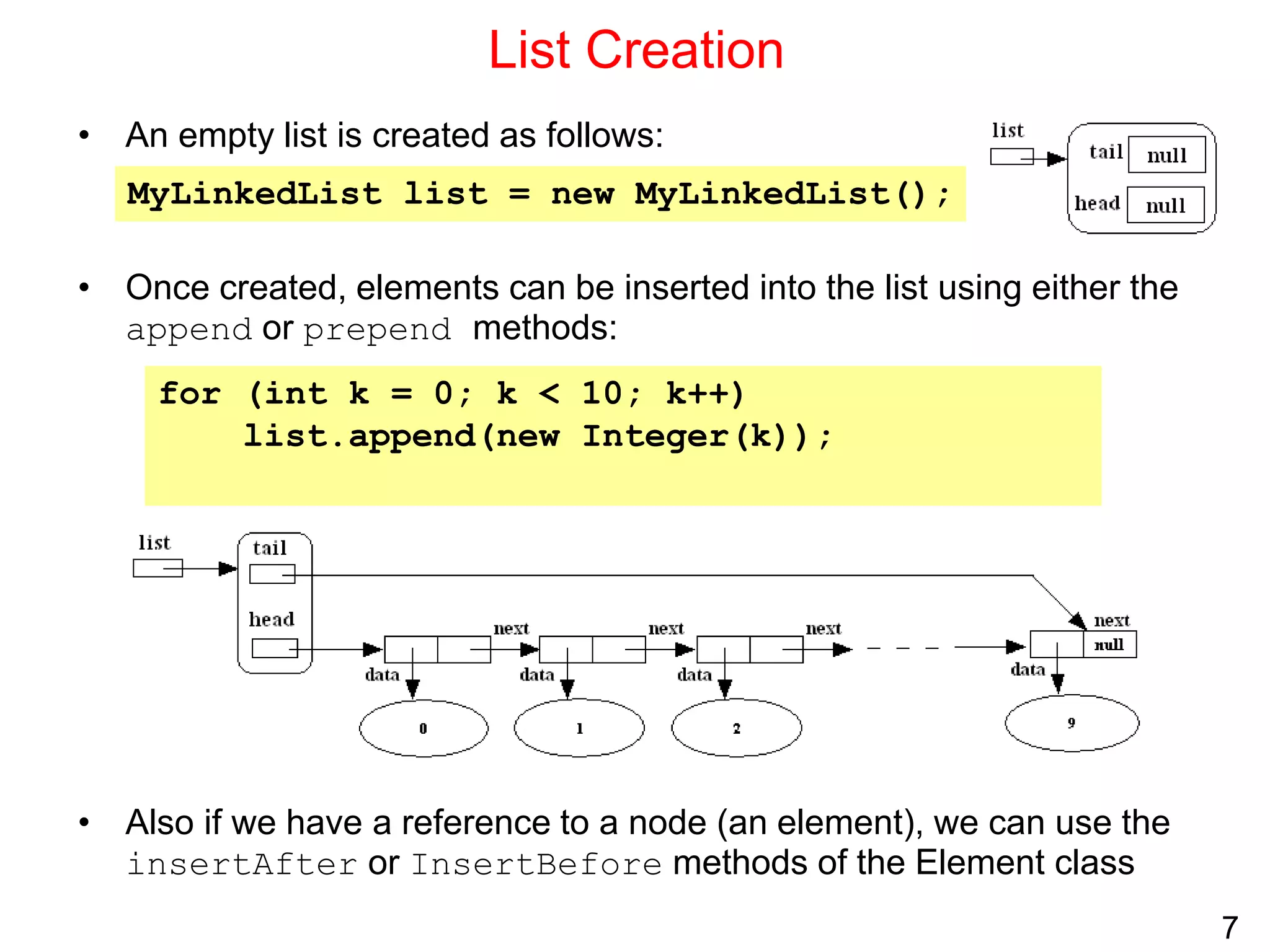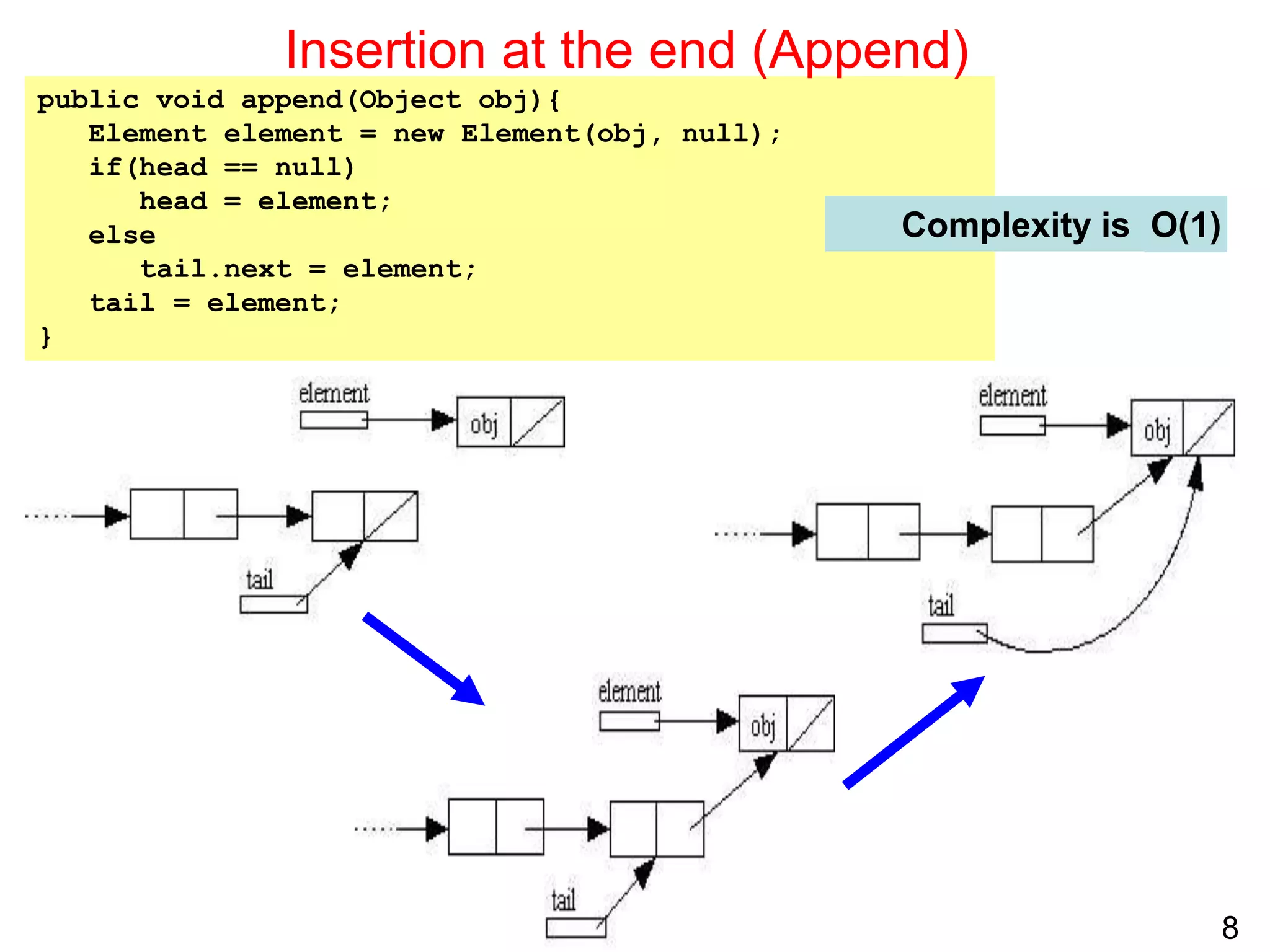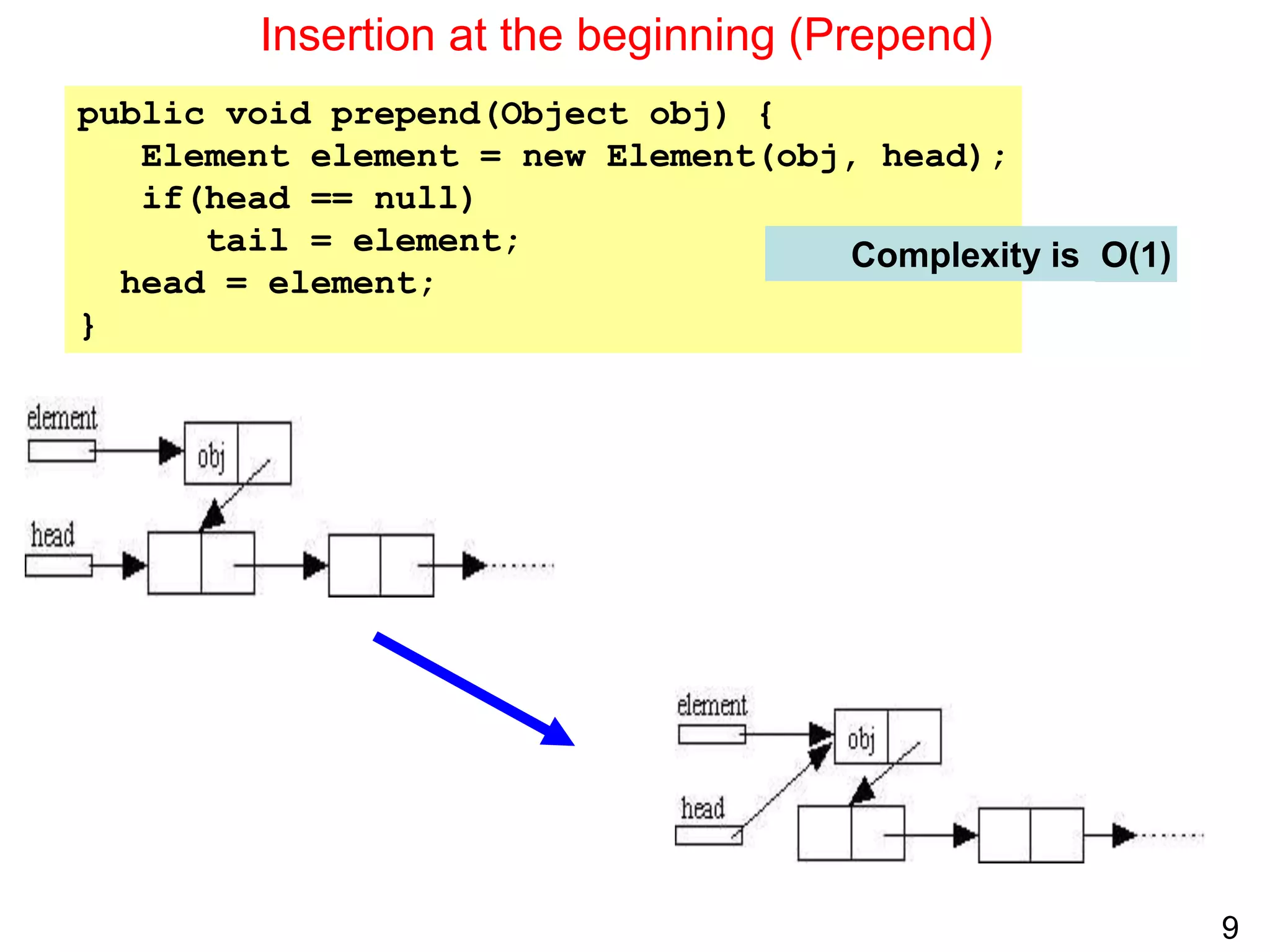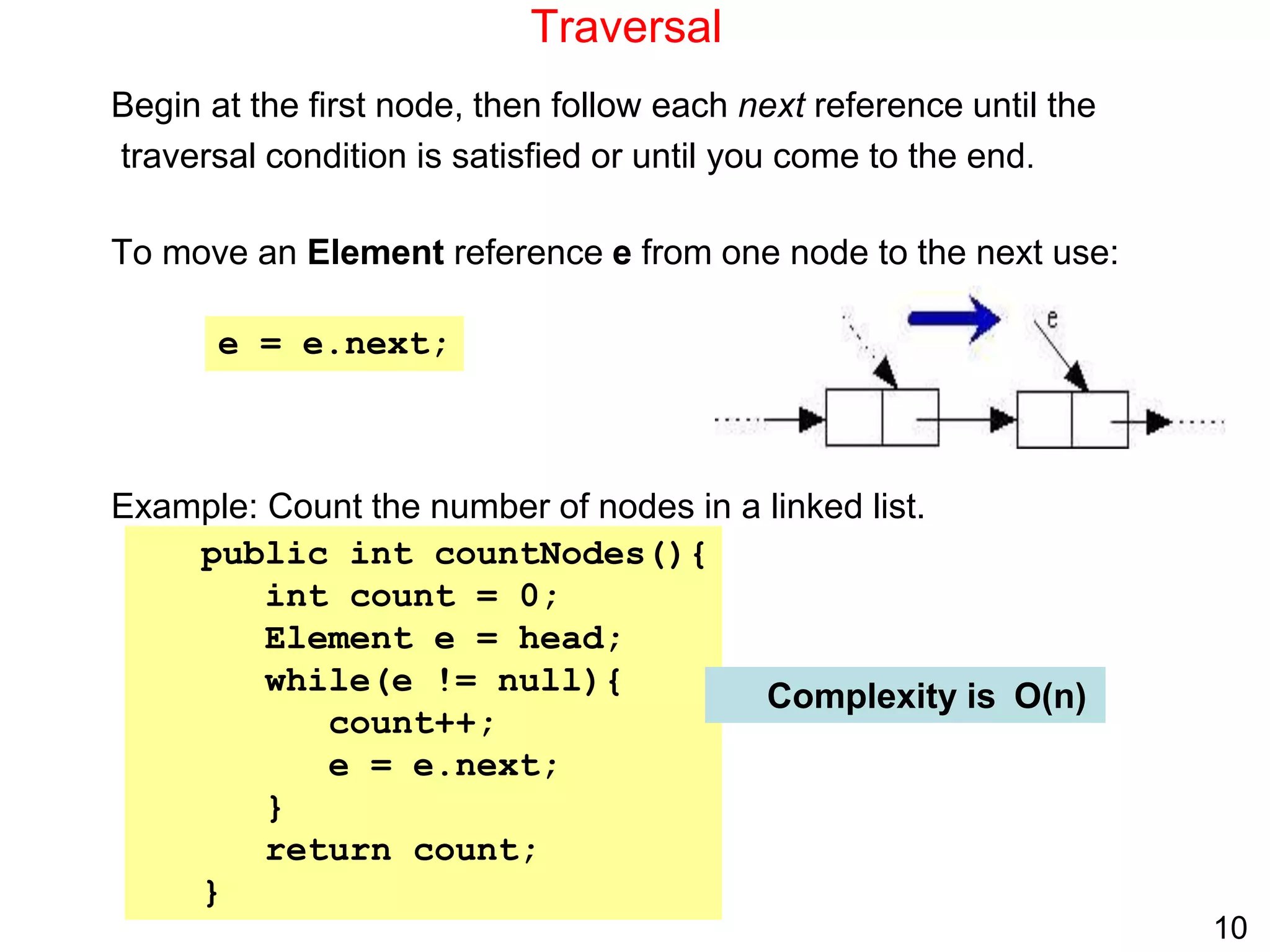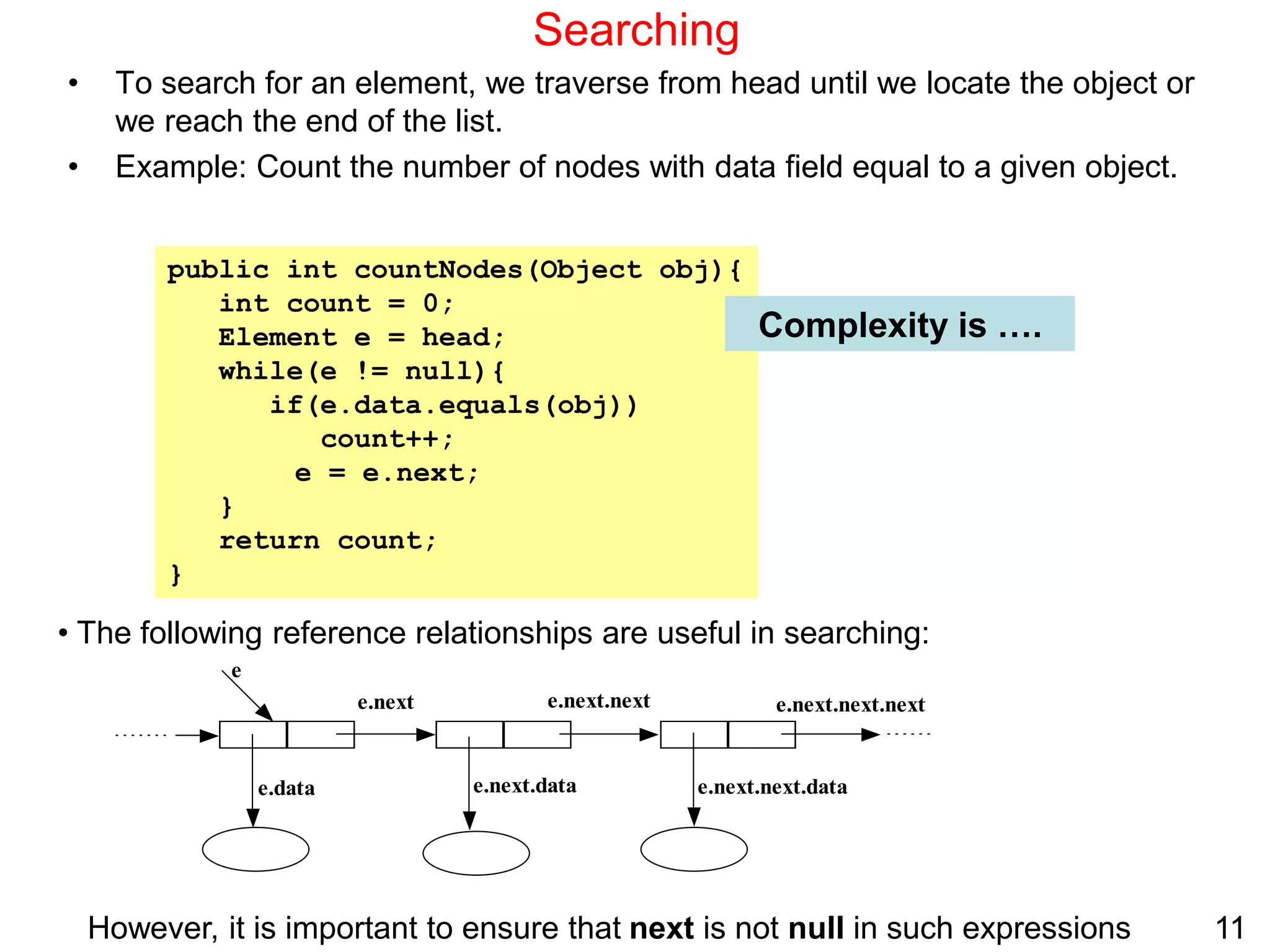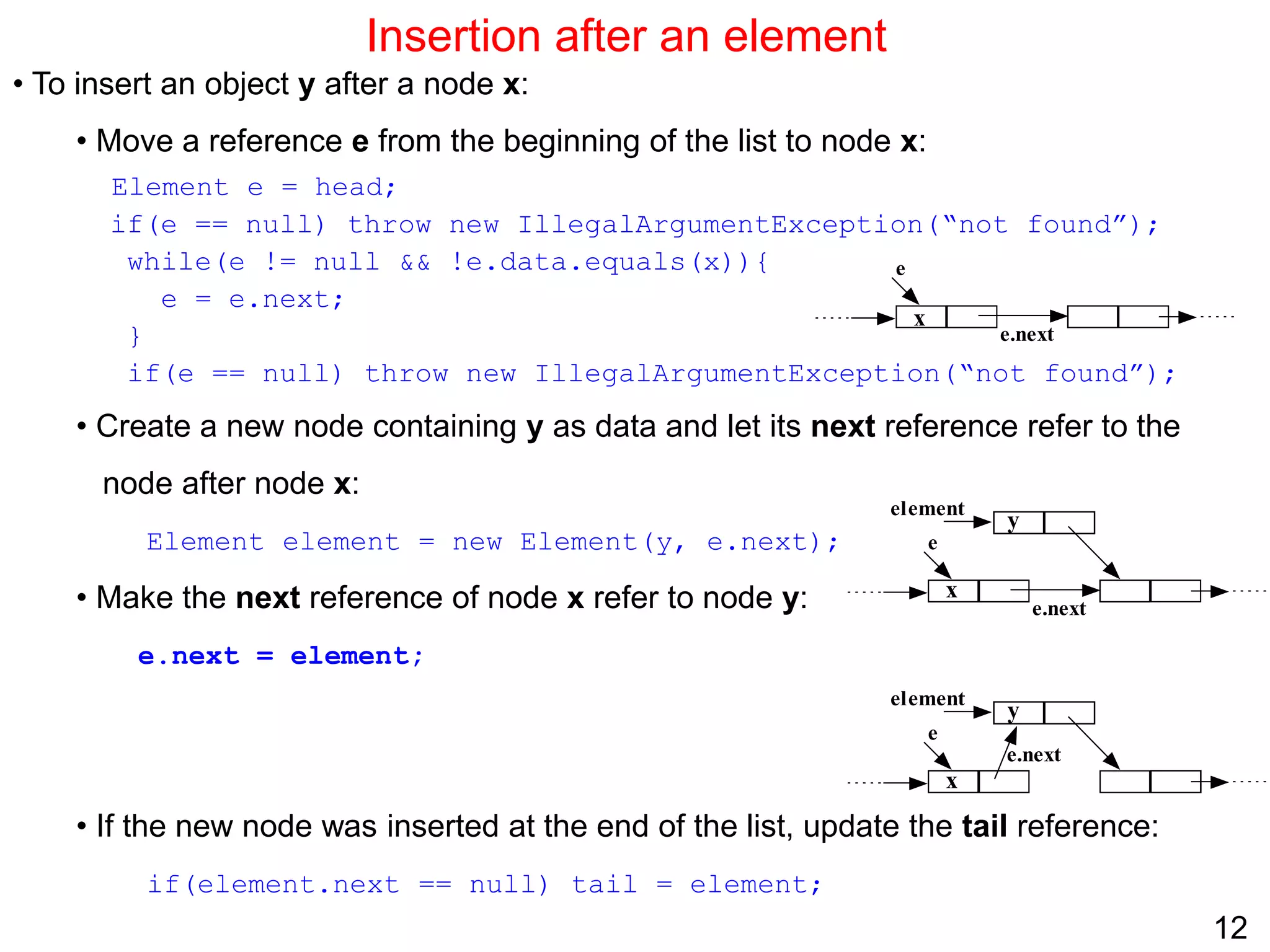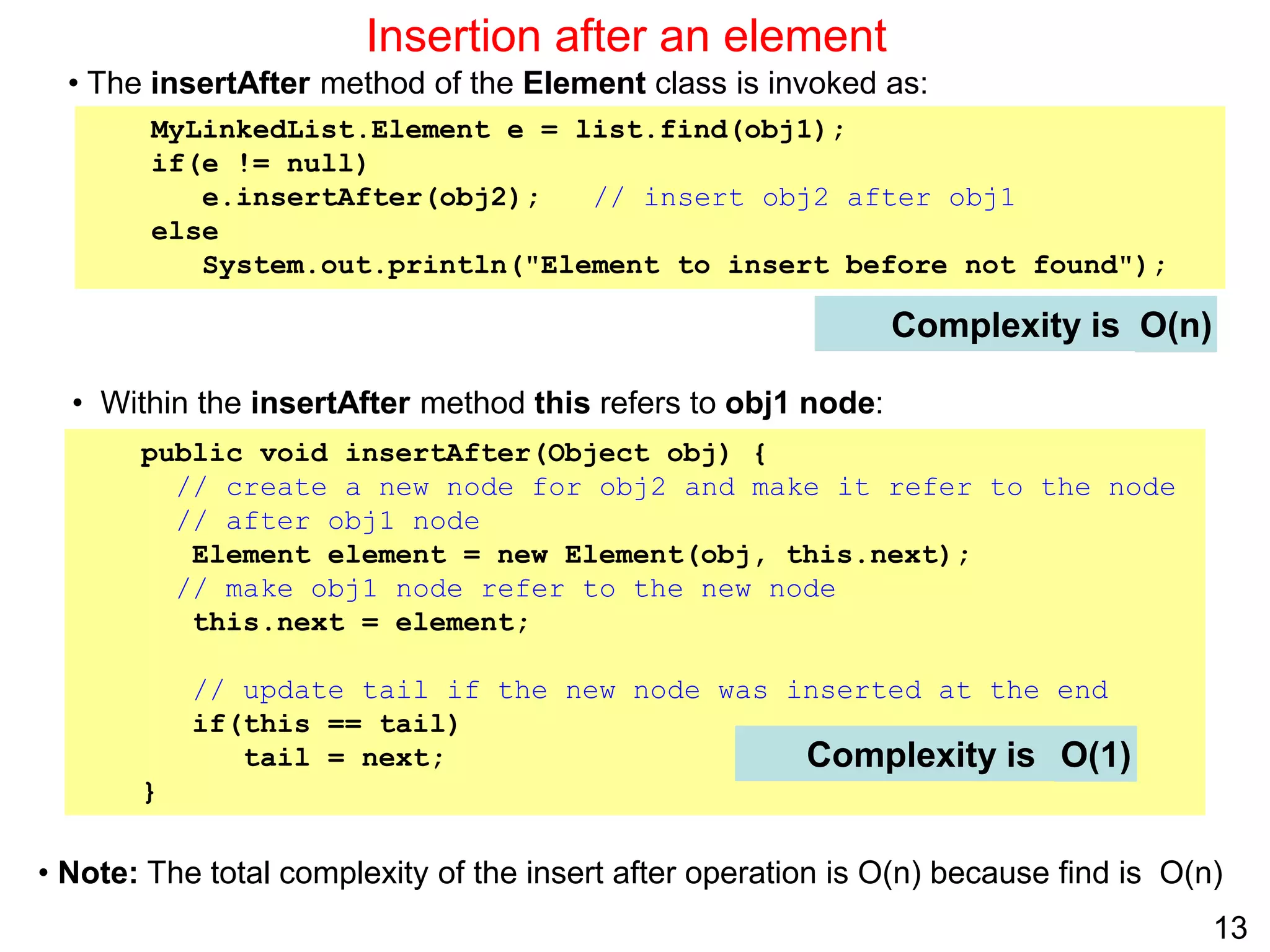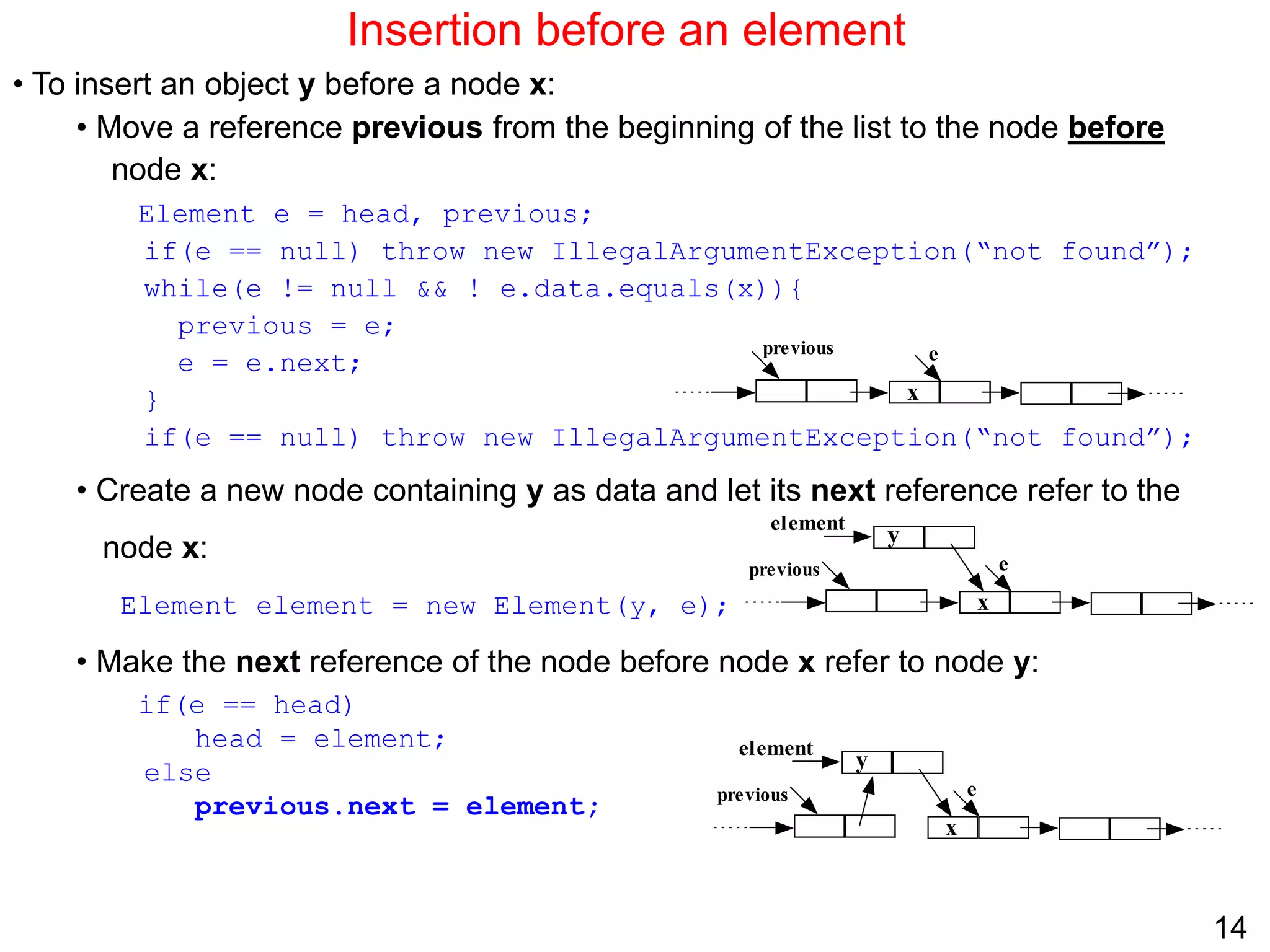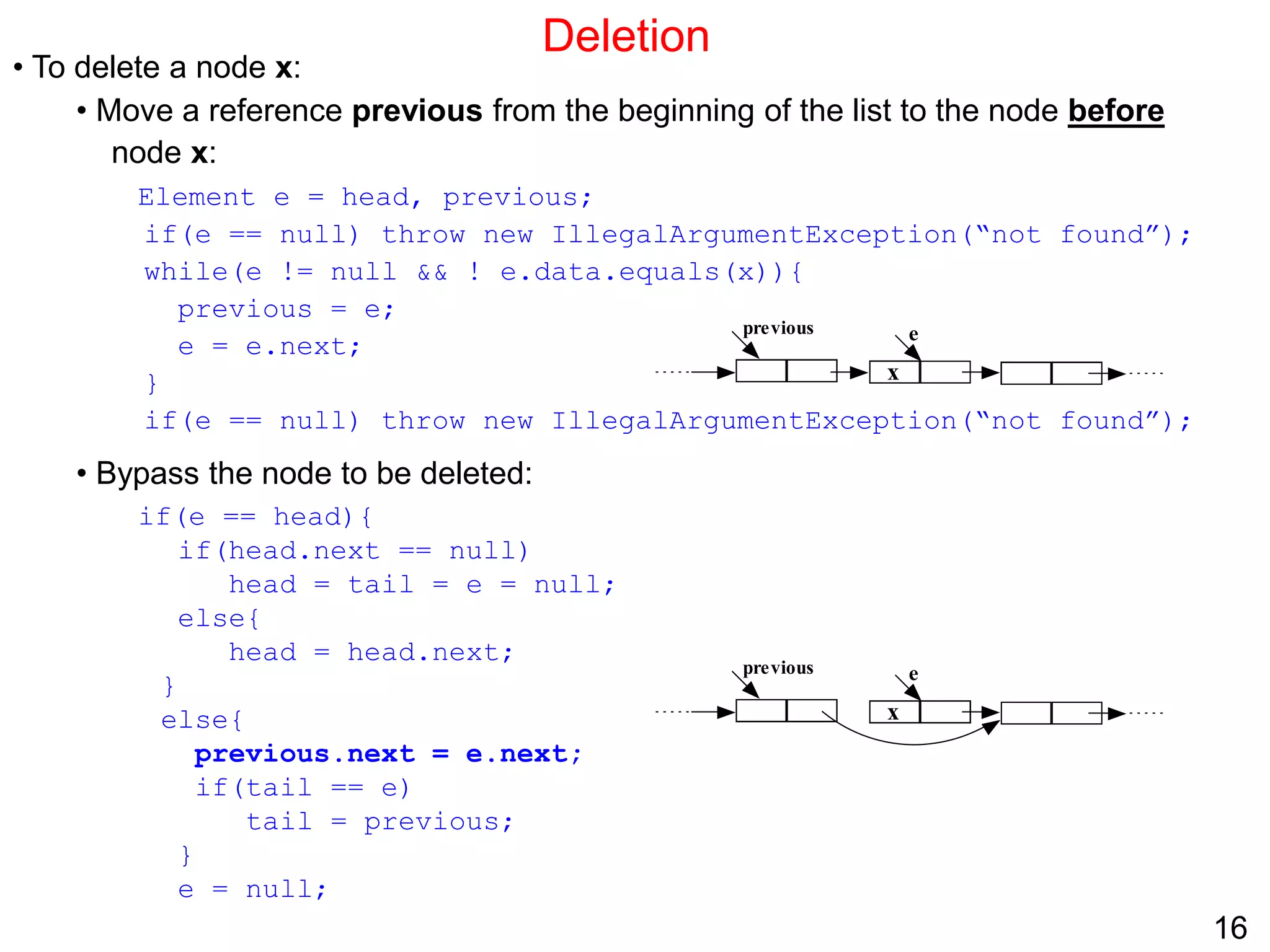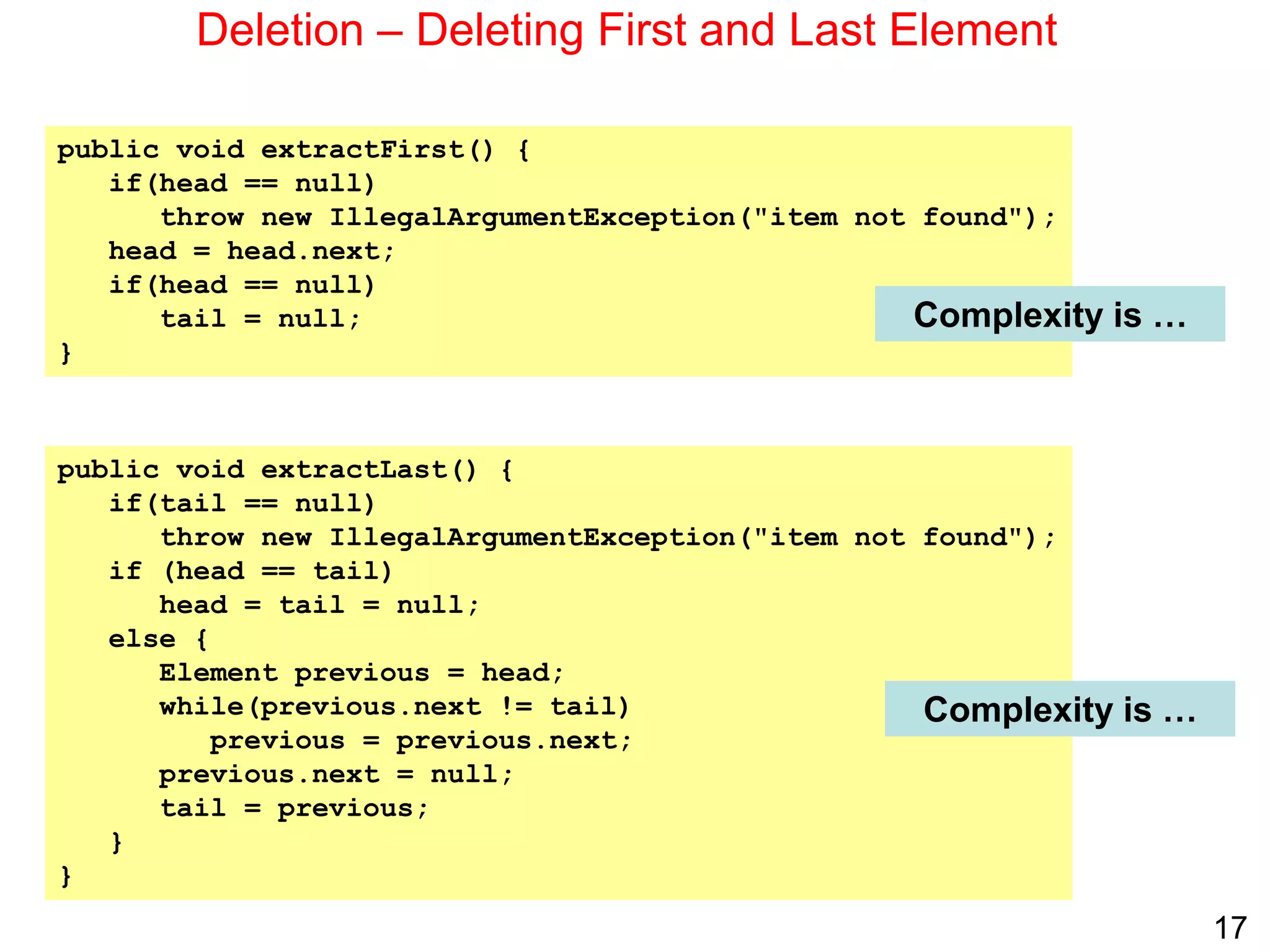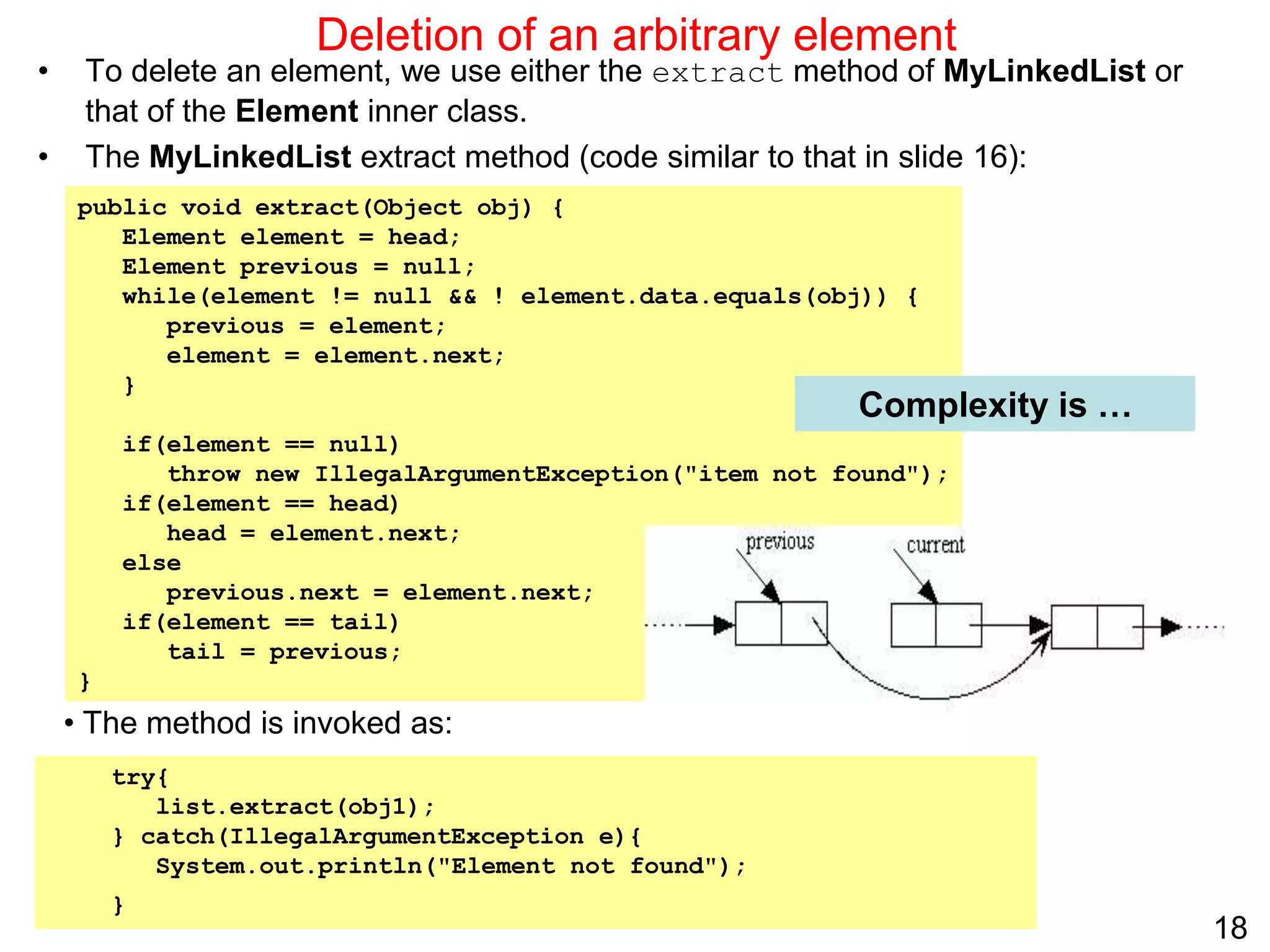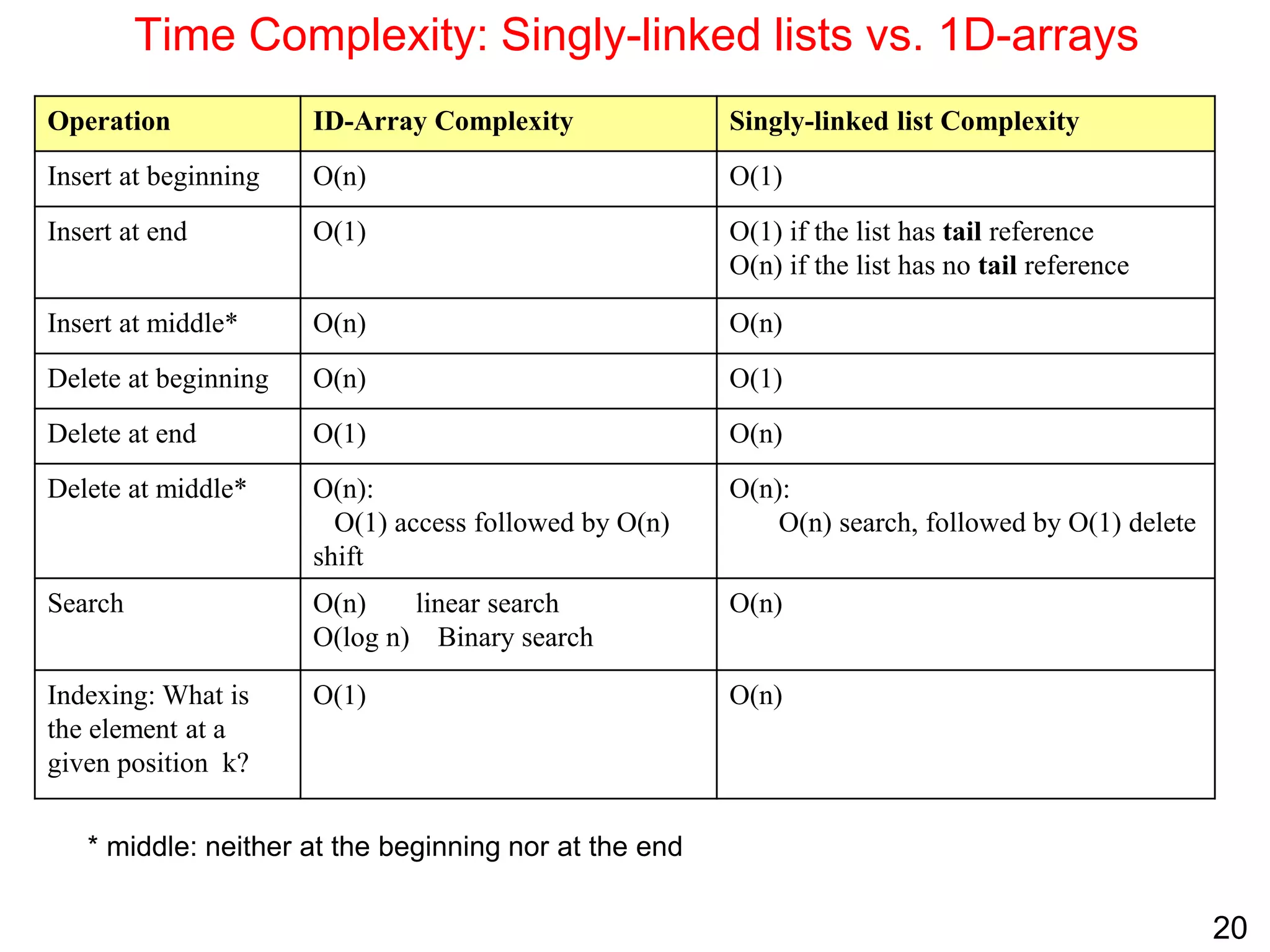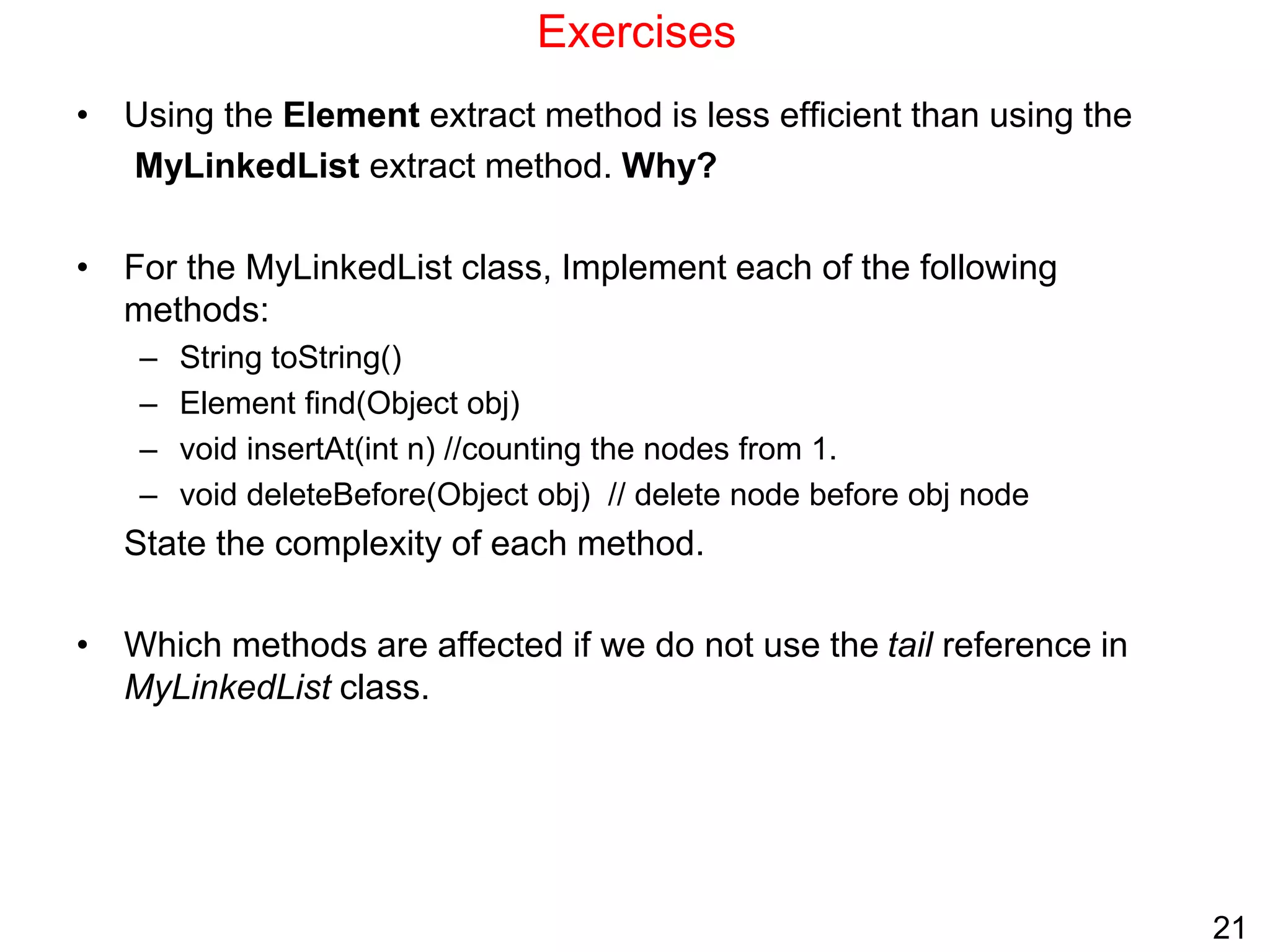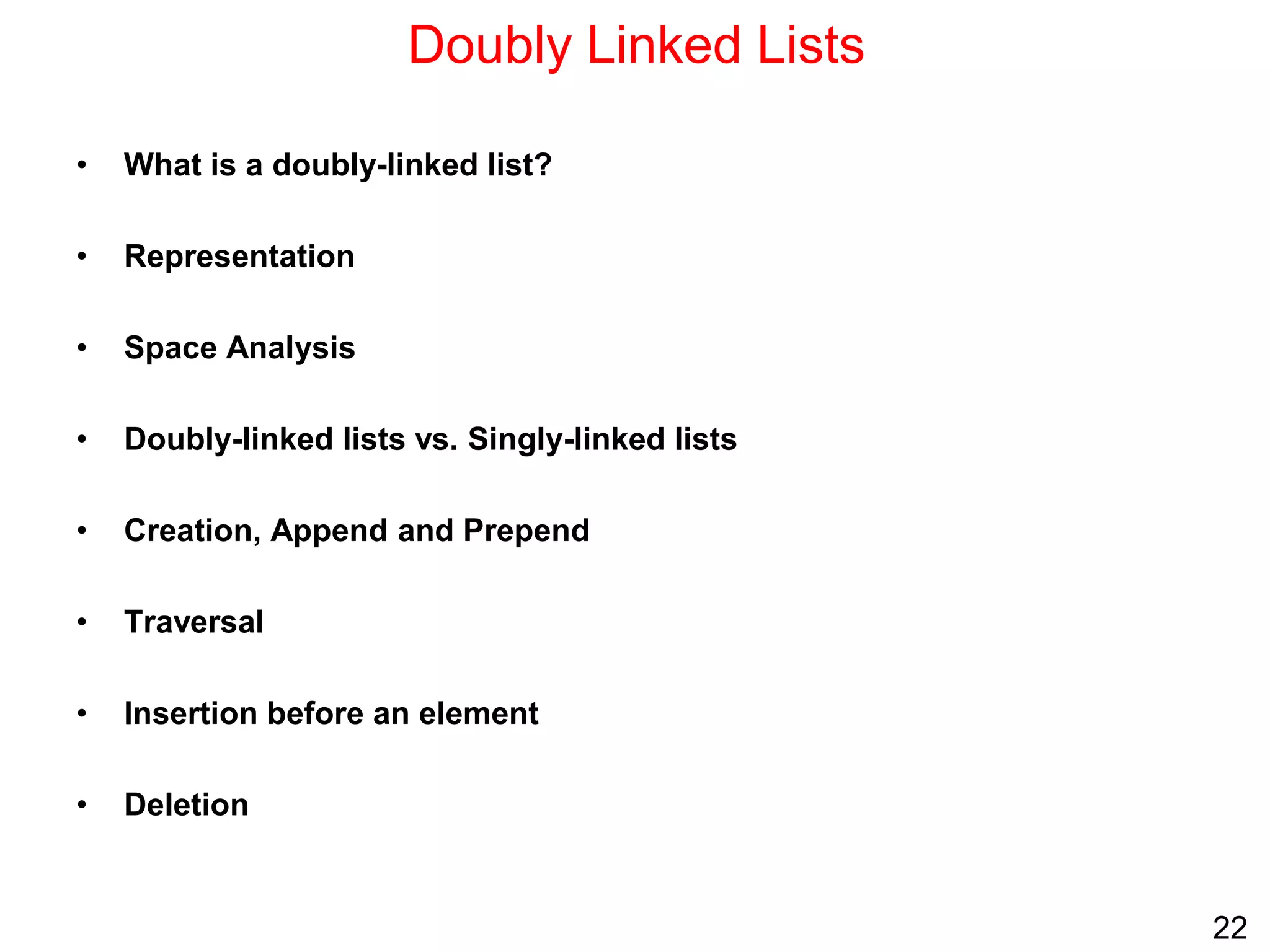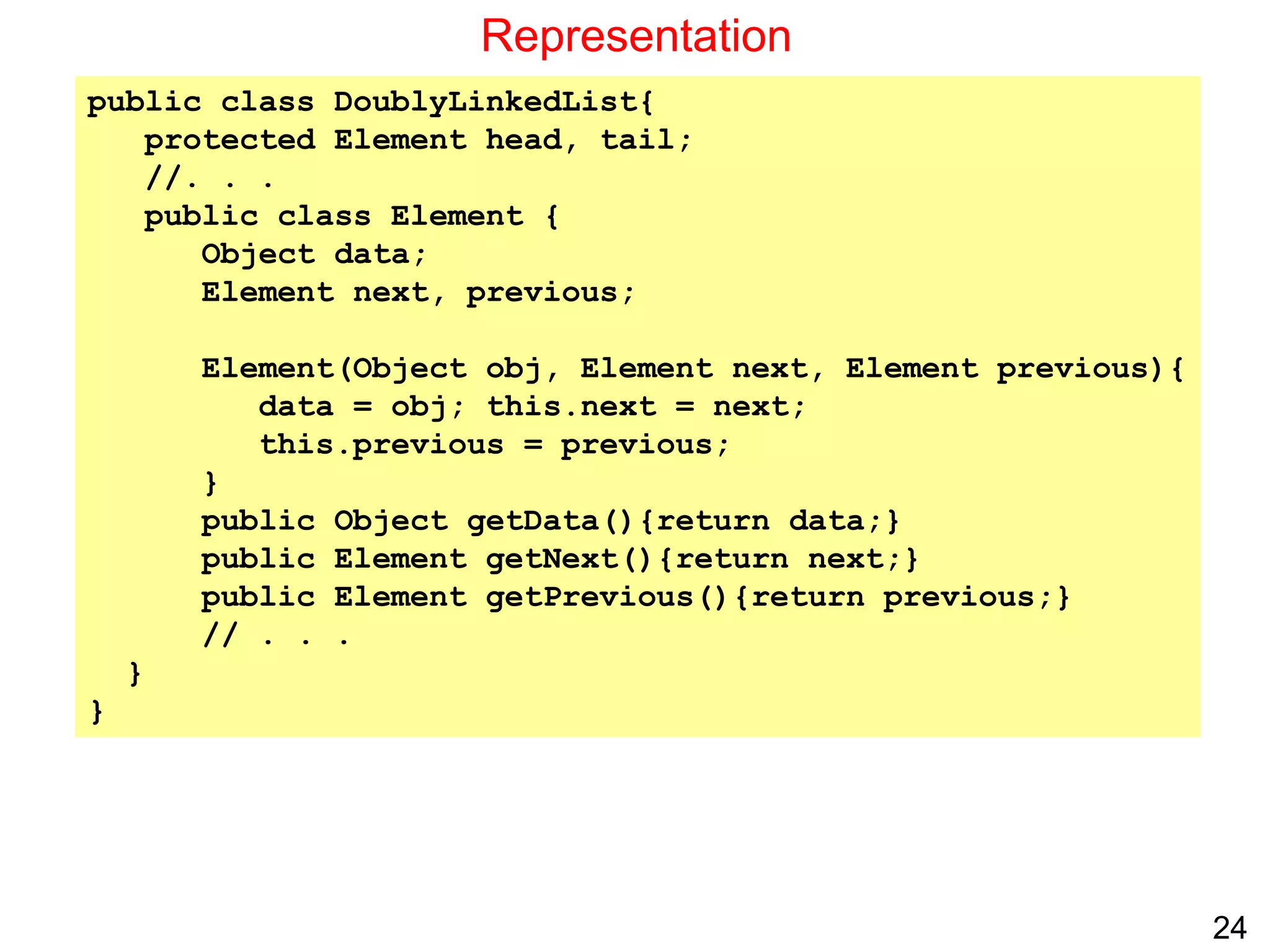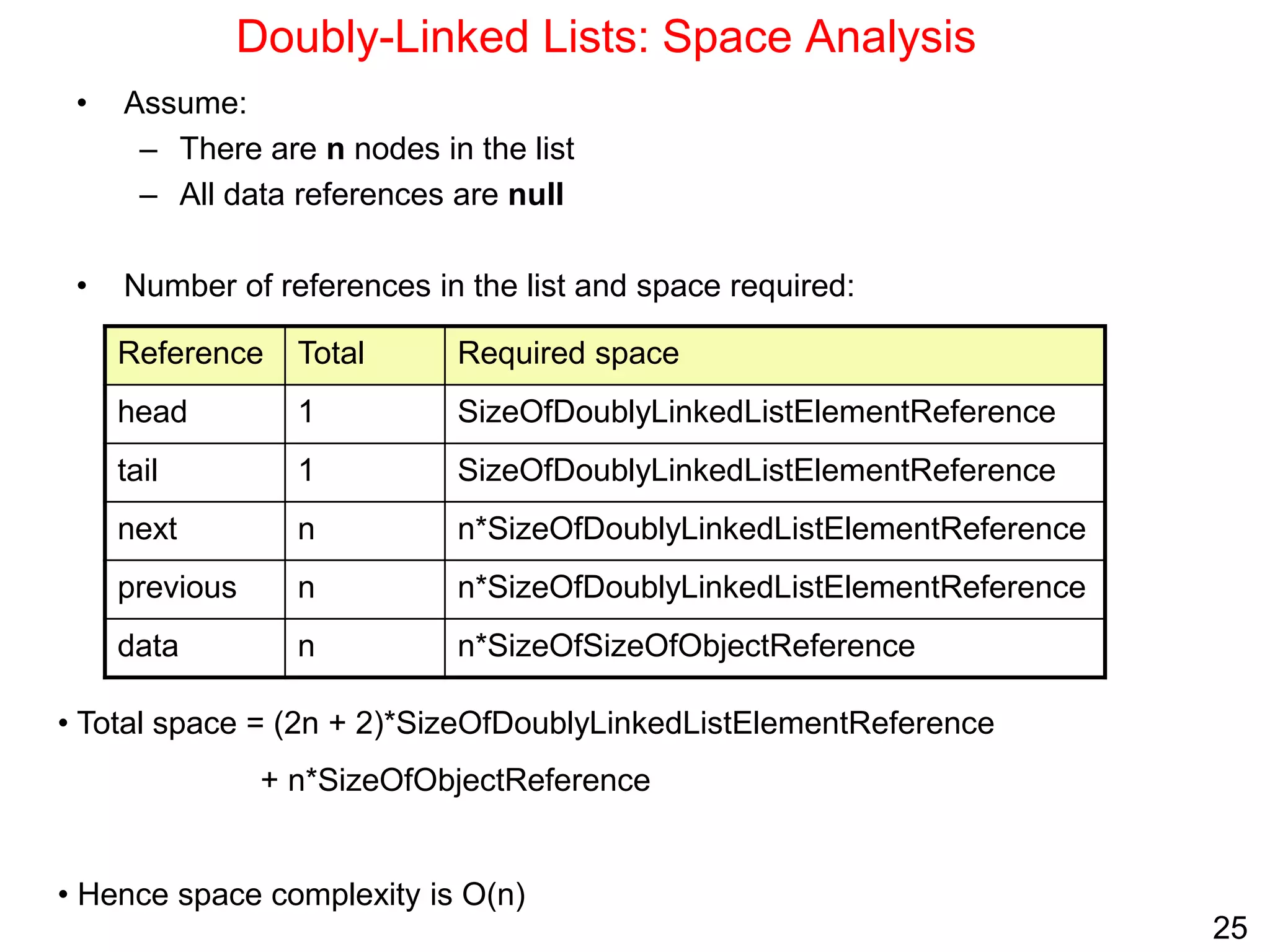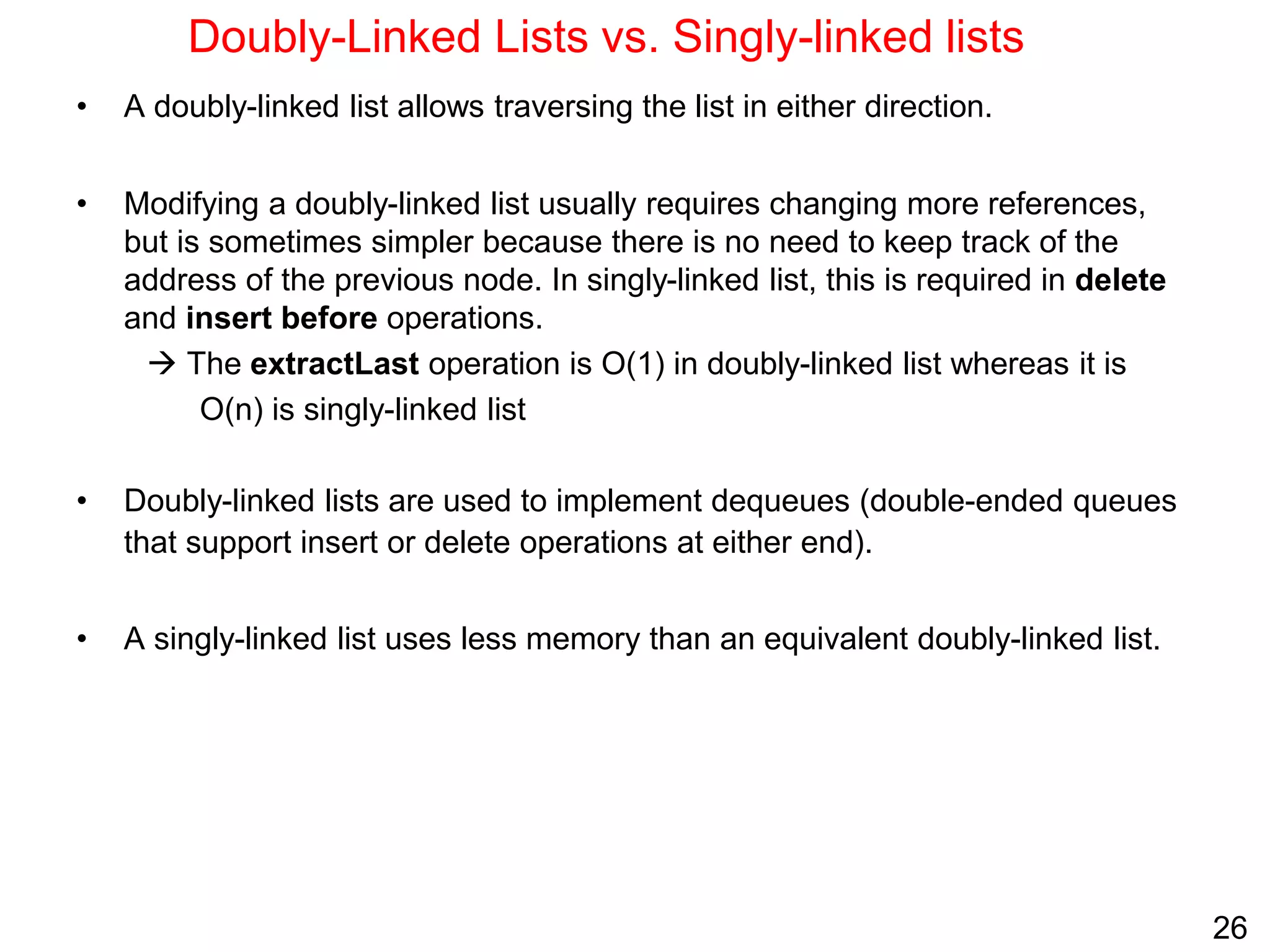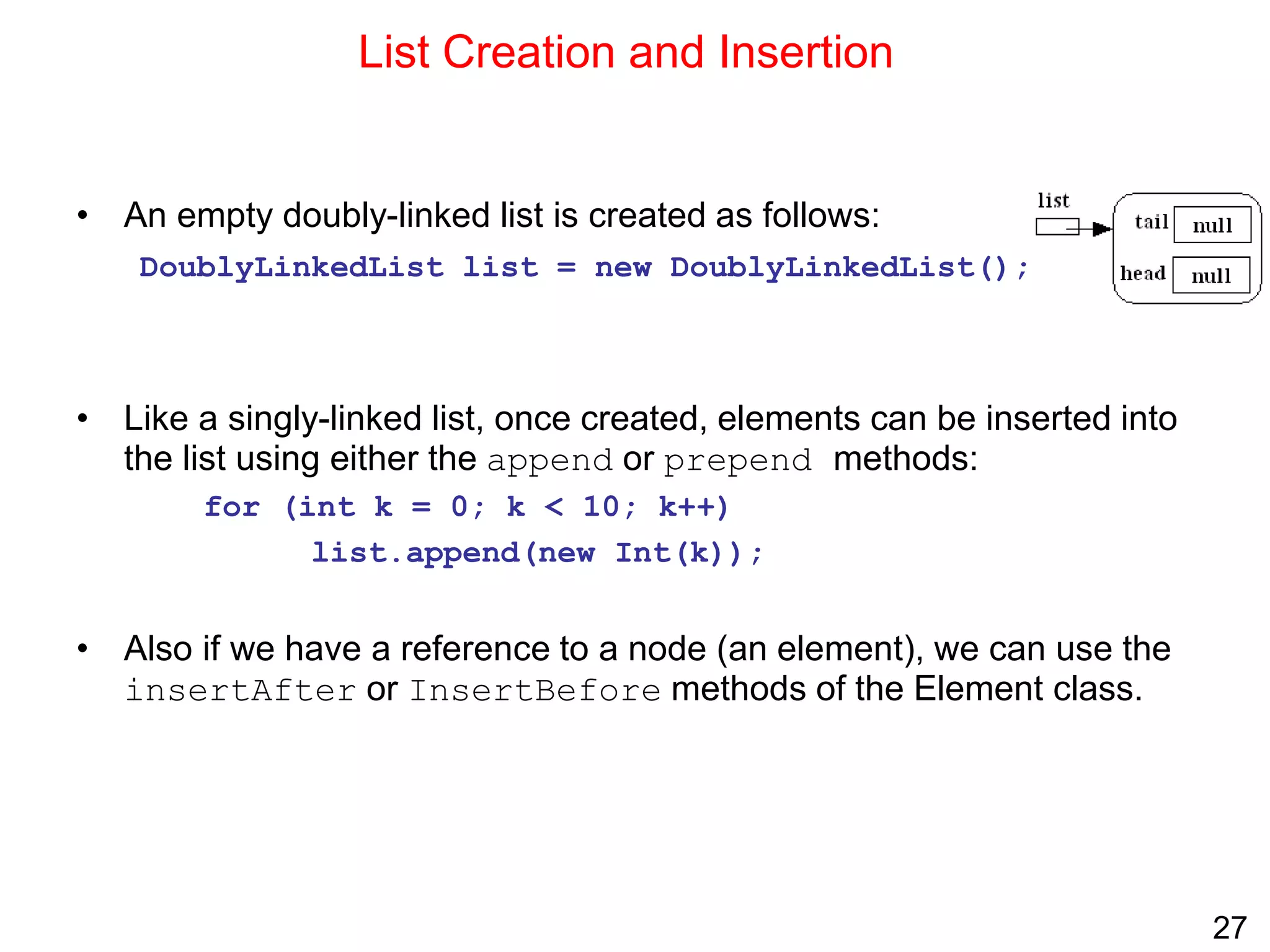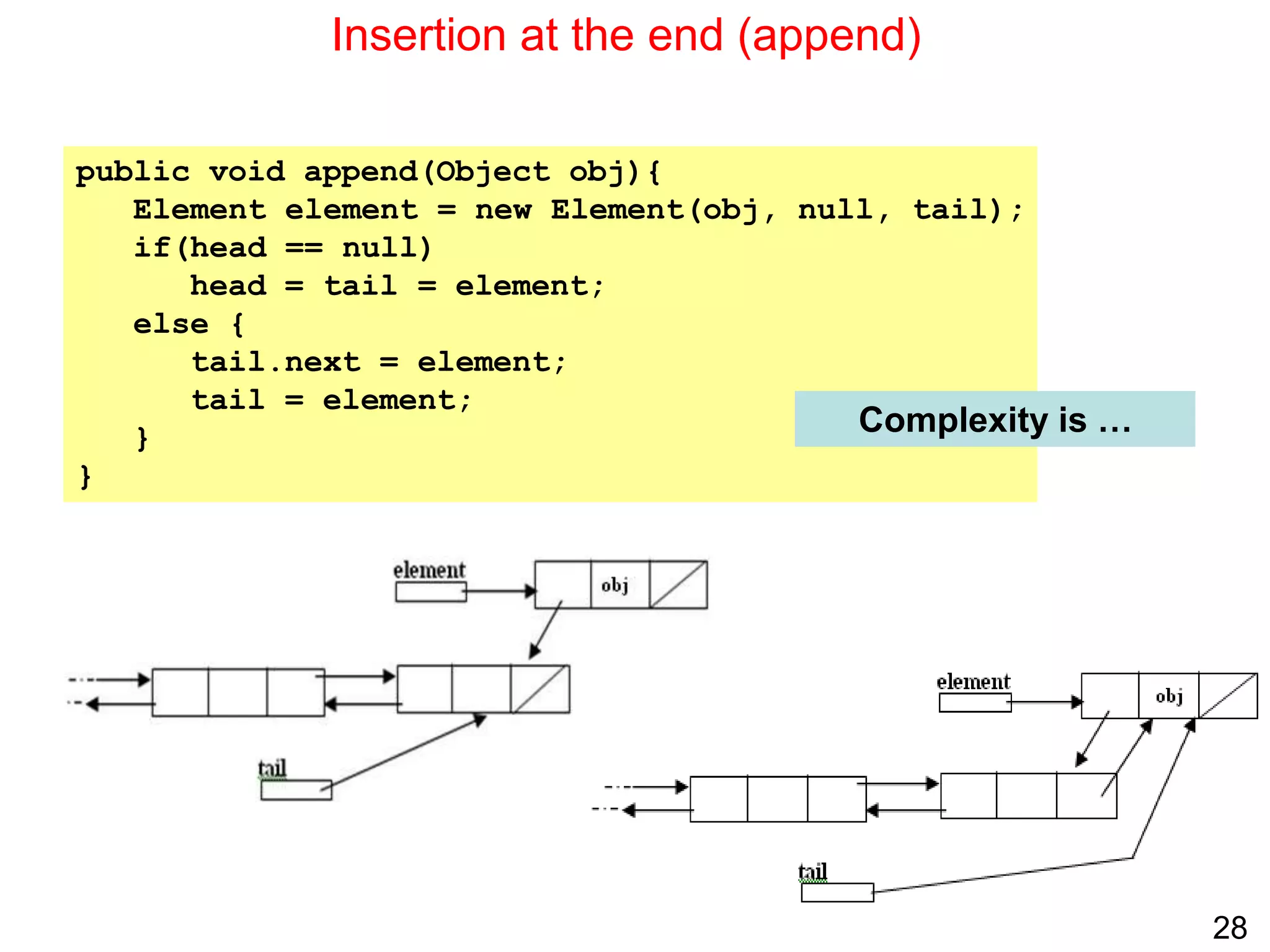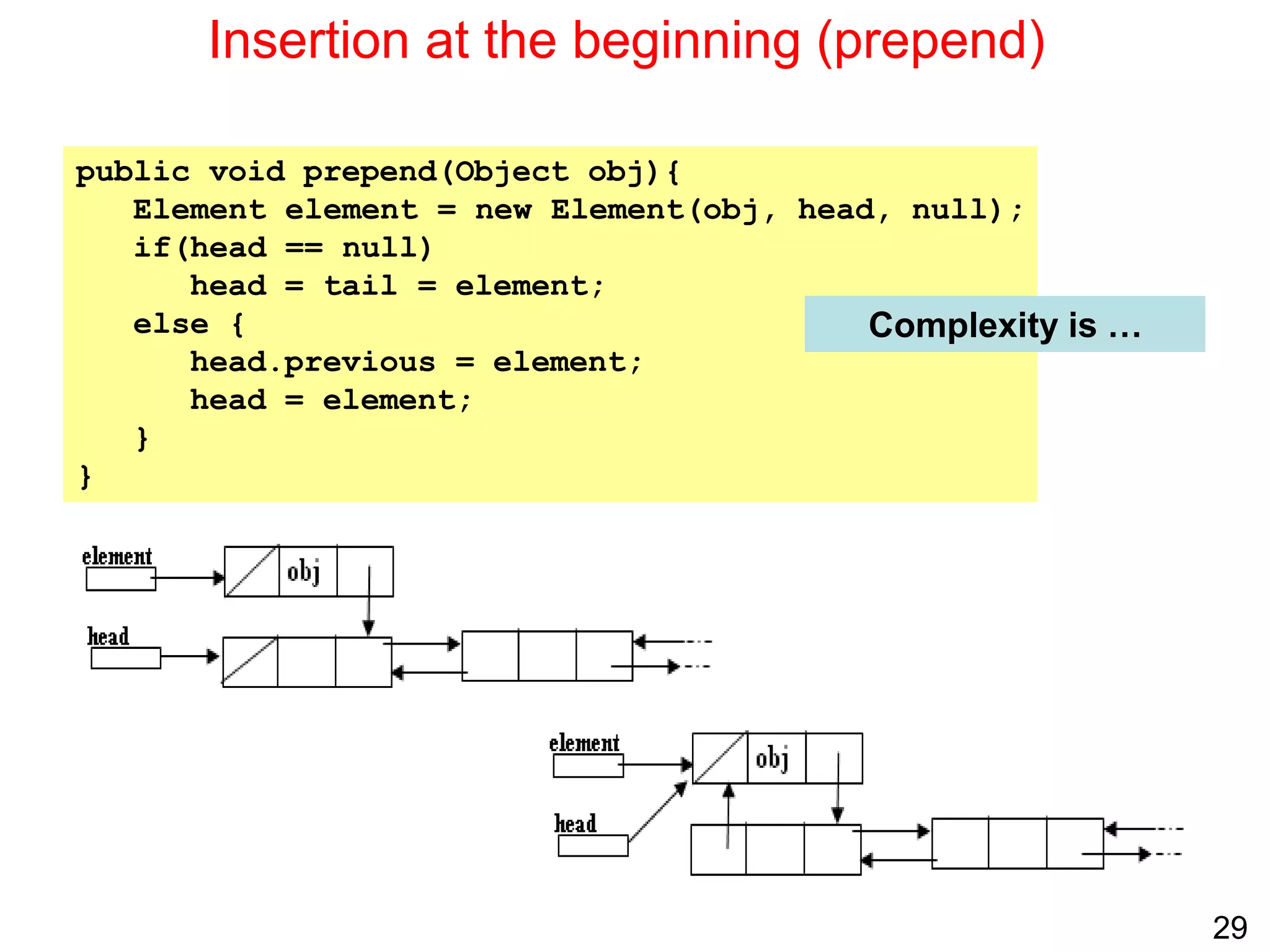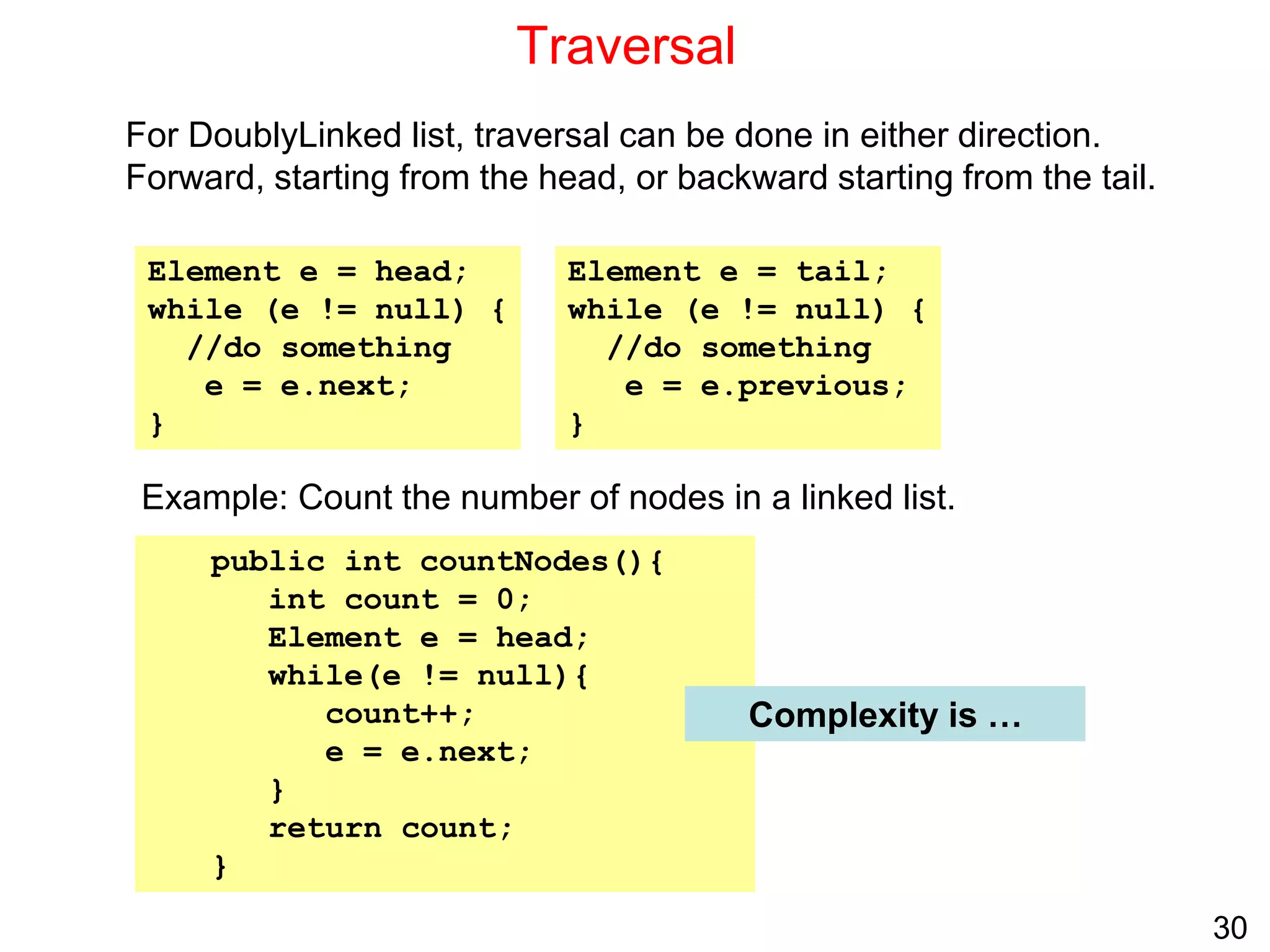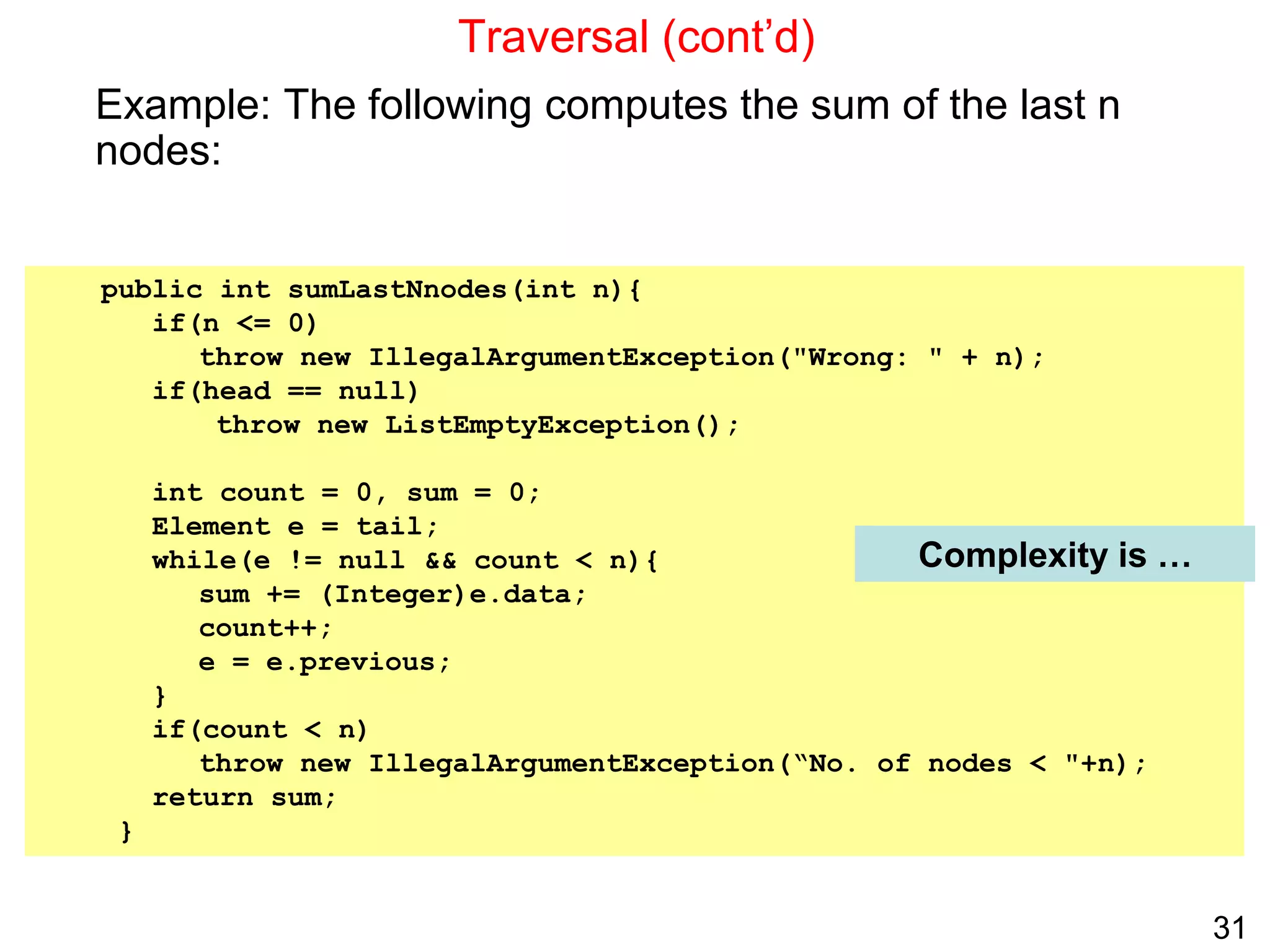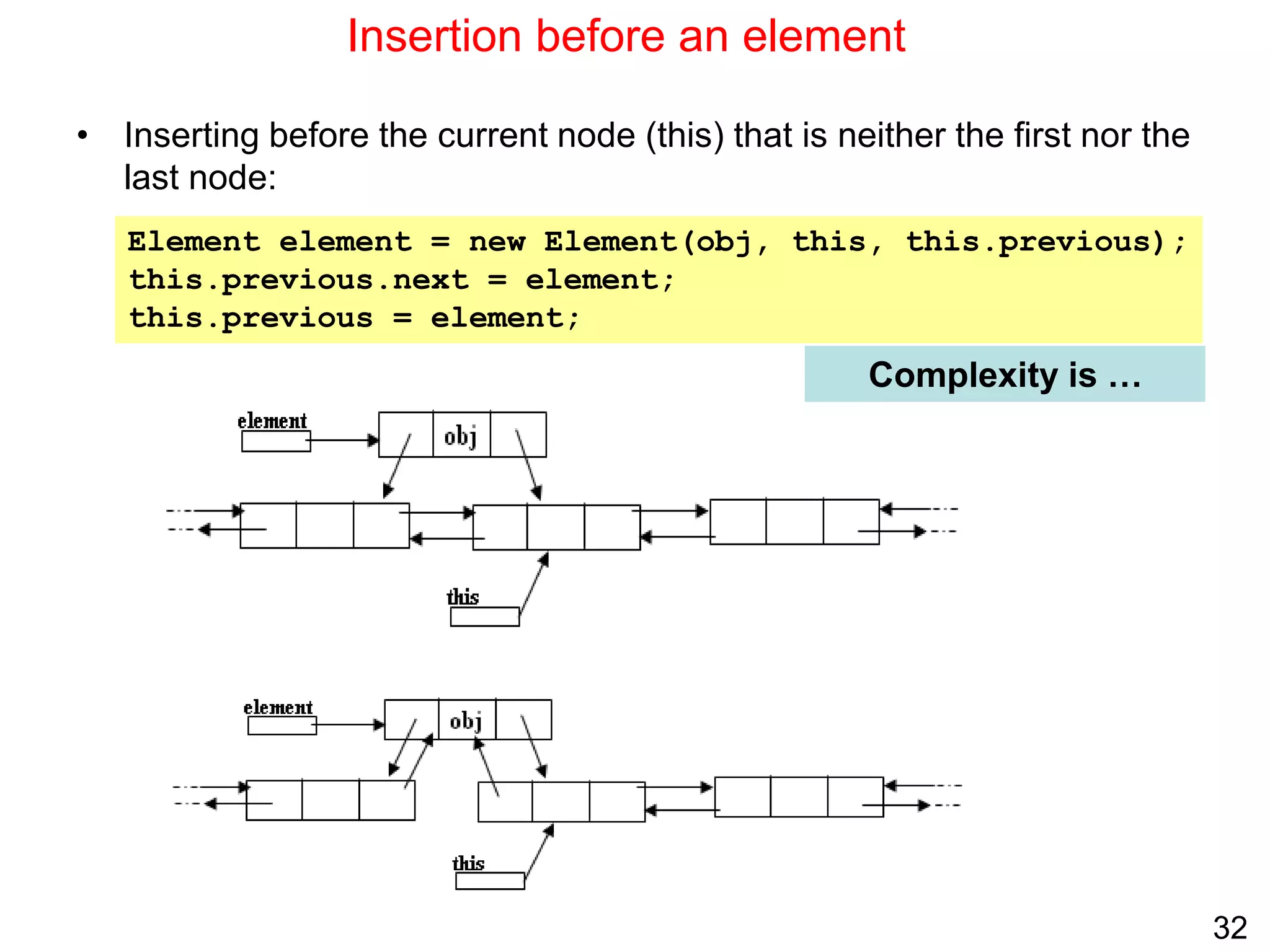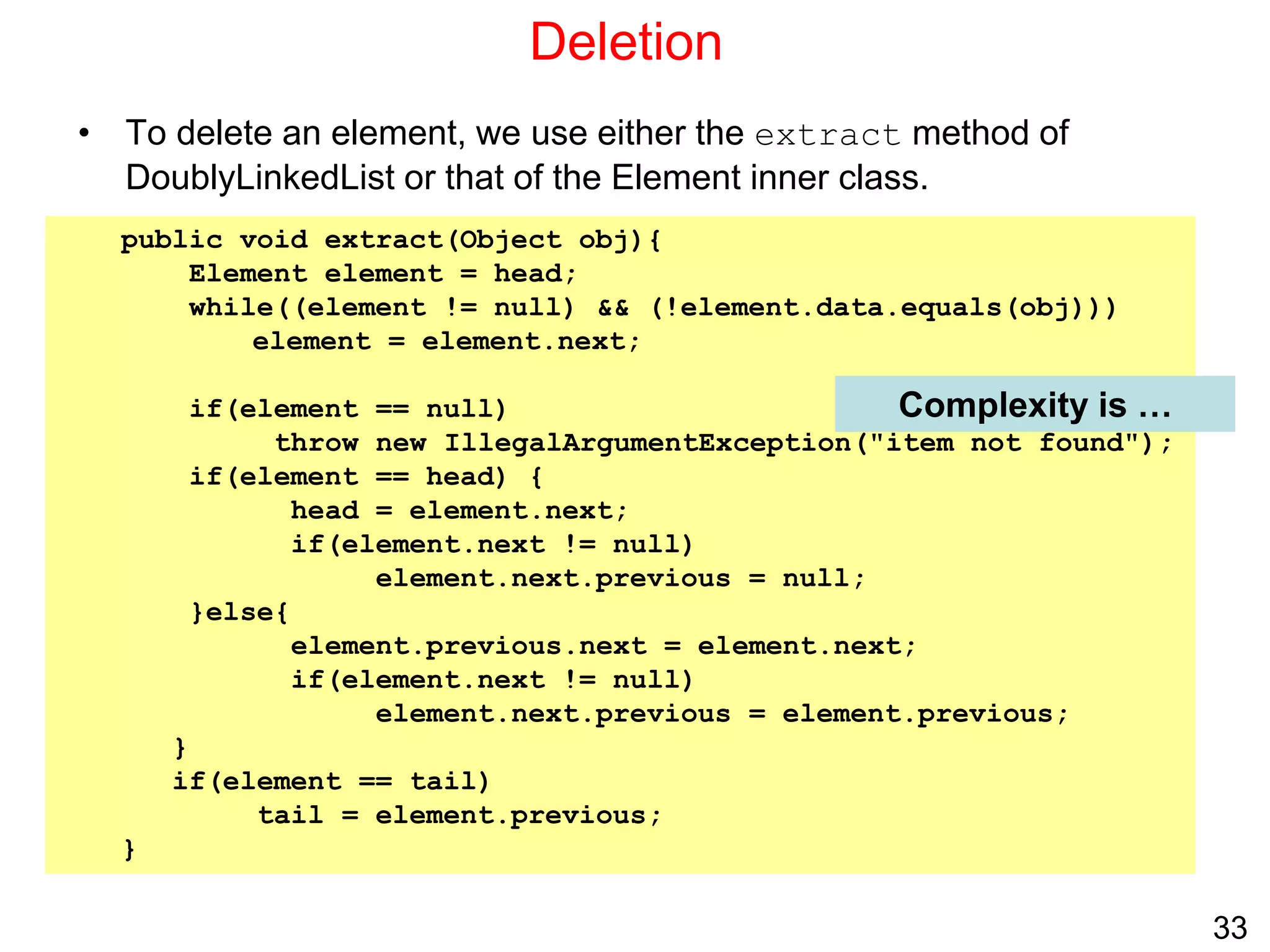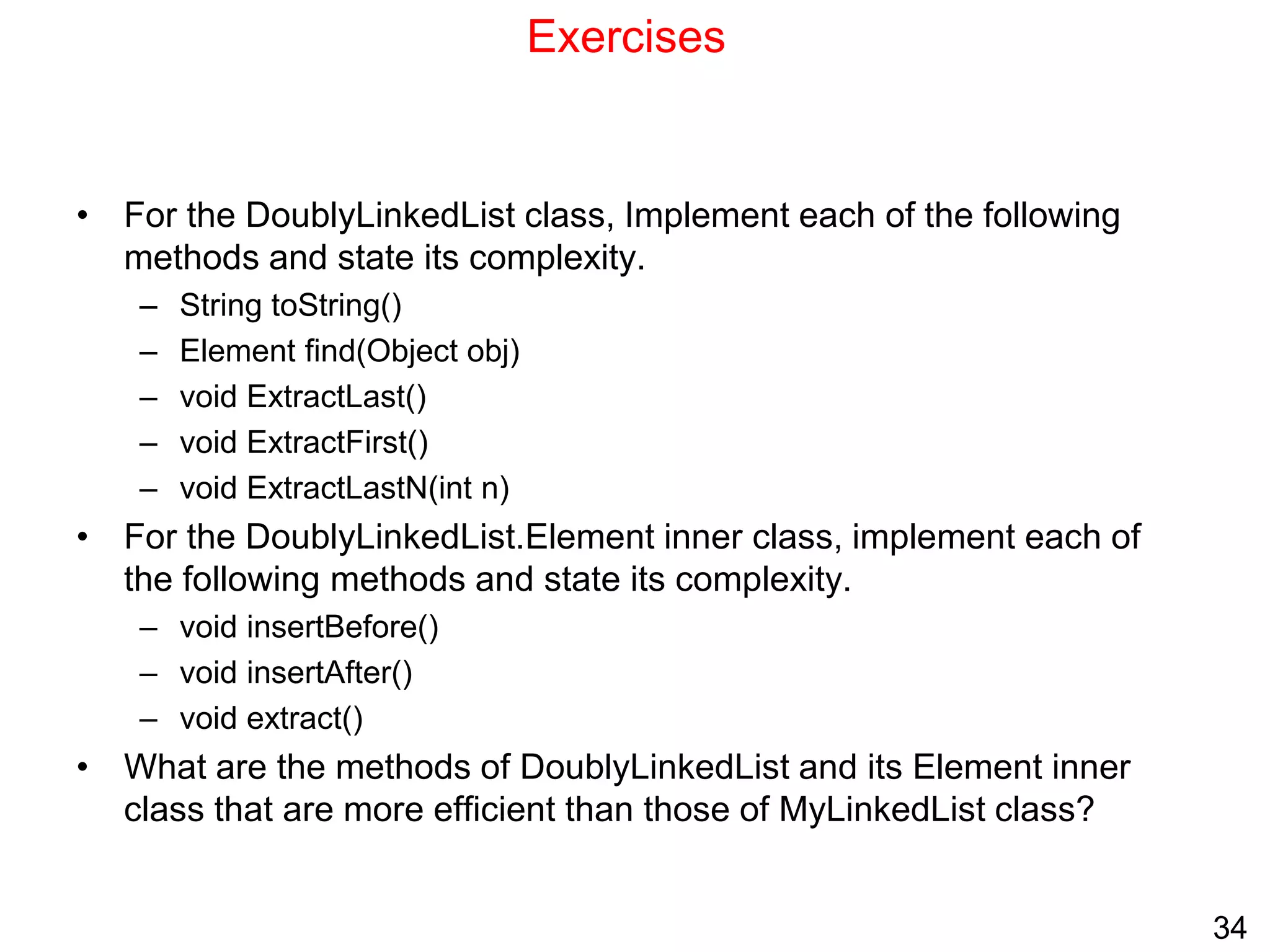Singly linked lists allow for efficient insertion and deletion of elements without shifting other elements. They have dynamic size and use less memory than arrays if the list is sparsely populated. However, random access is not efficient as elements are not stored contiguously in memory. Common operations like search, insertion, and deletion have O(n) time complexity due to the need to traverse the list sequentially. Space complexity is O(n) to store the elements and references between nodes.
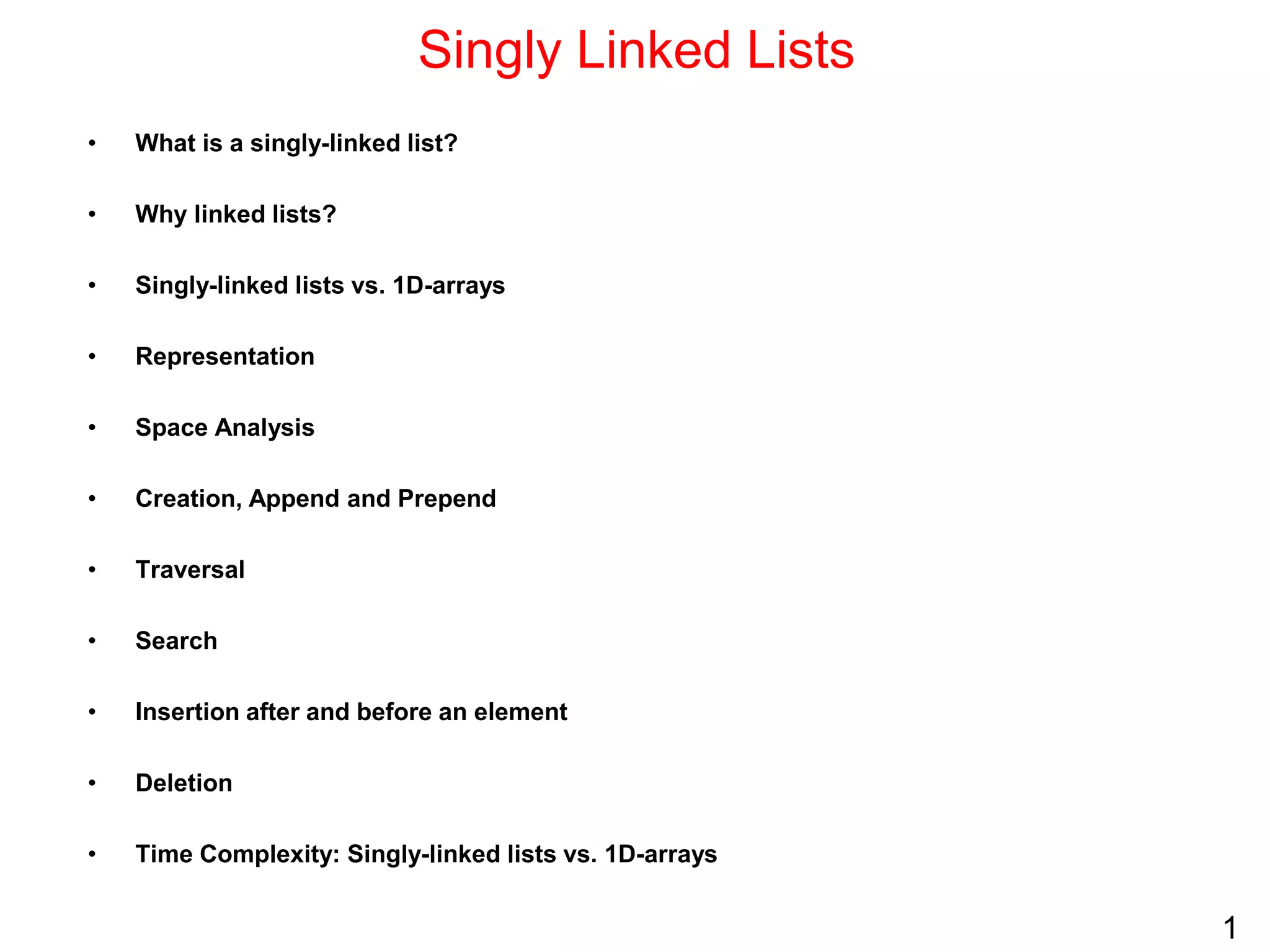
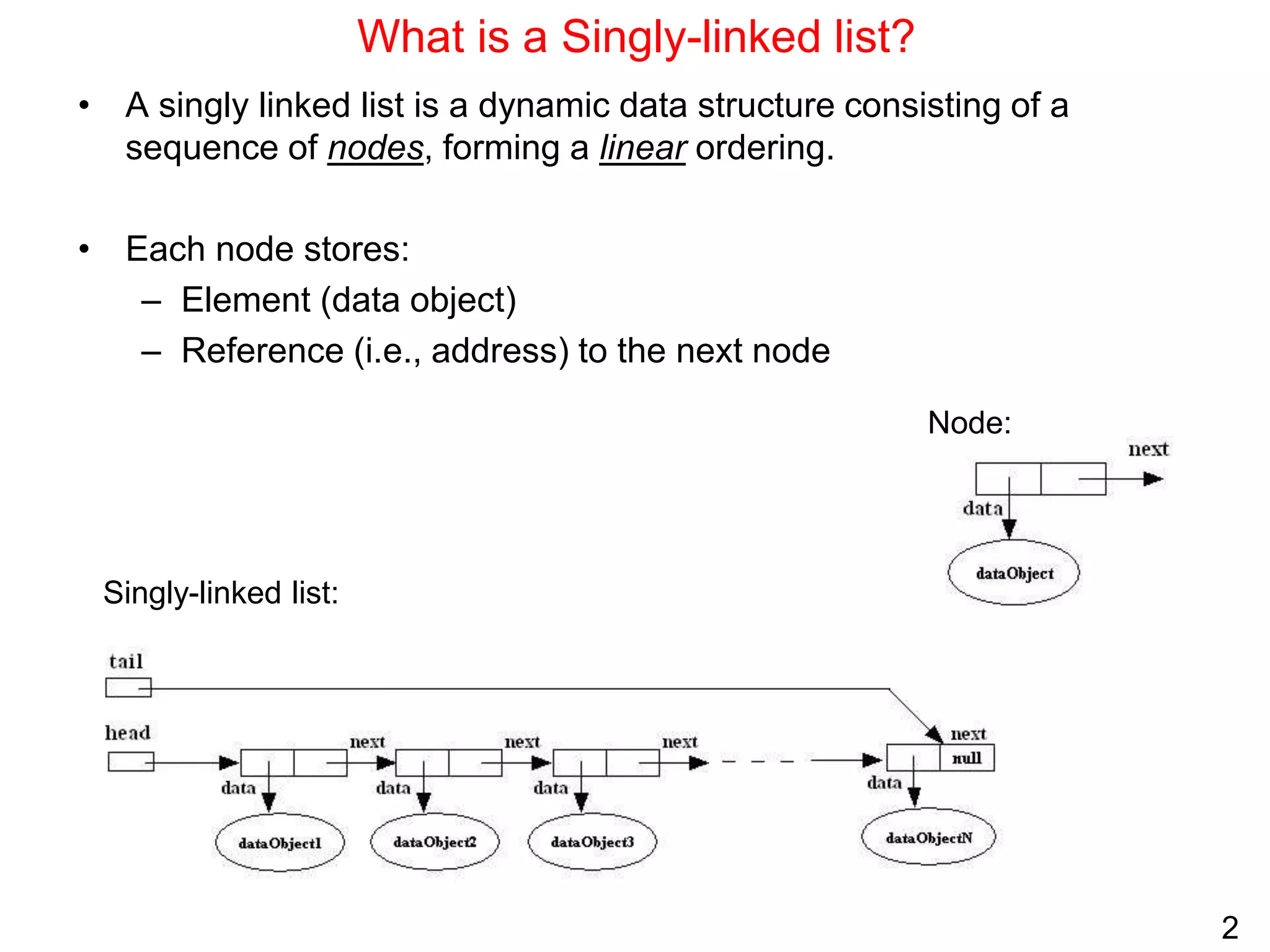
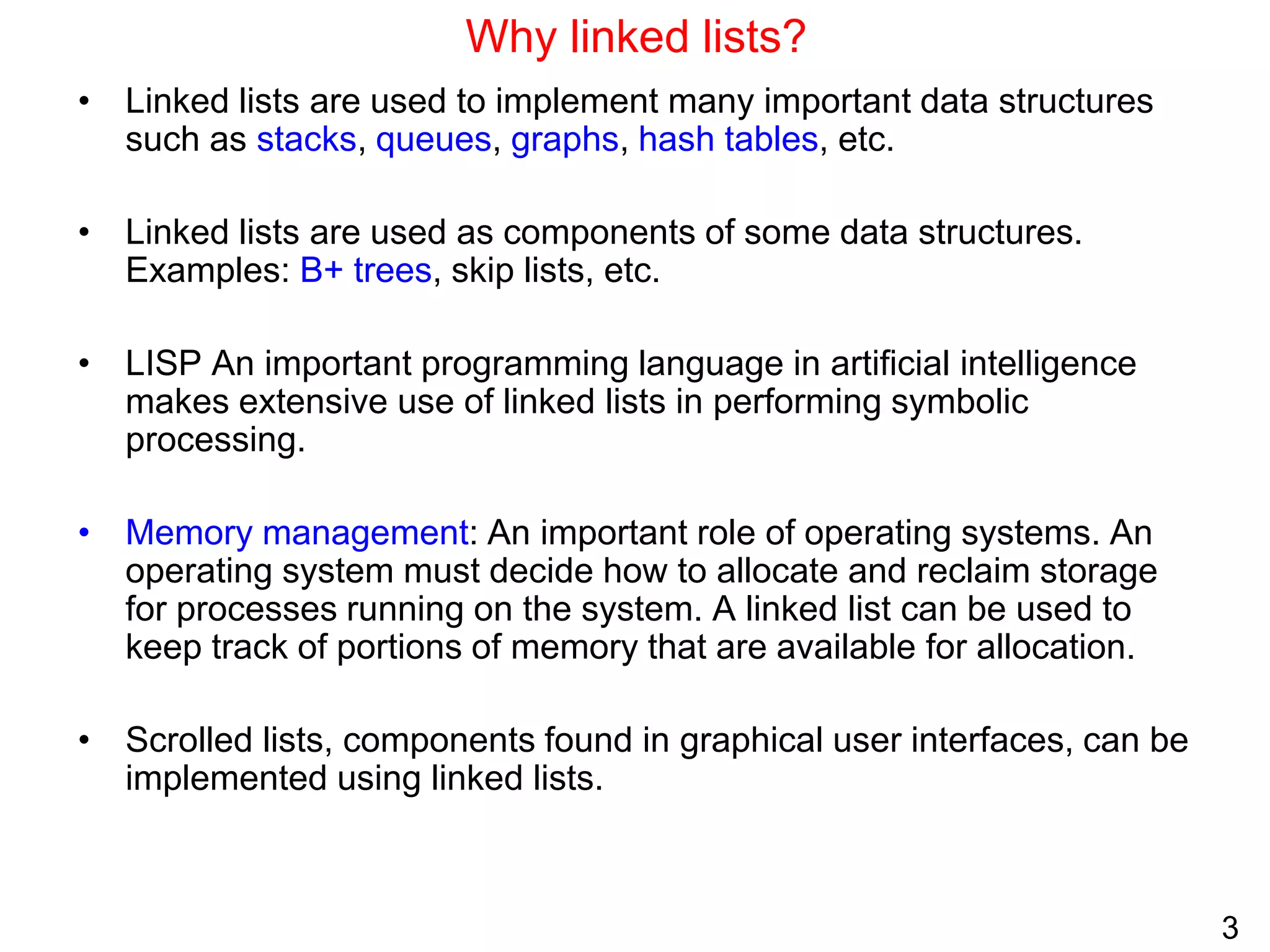
![4
Singly-linked lists vs. 1D-arrays
ID-array Singly-linked list
Fixed size: Resizing is expensive Dynamic size
Insertions and Deletions are inefficient:
Elements are usually shifted
Insertions and Deletions are efficient: No
shifting
Random access i.e., efficient indexing No random access
Not suitable for operations requiring
accessing elements by index such as sorting
No memory waste if the array is full or almost
full; otherwise may result in much memory
waste.
Extra storage needed for references; however
uses exactly as much memory as it needs
Sequential access is faster because of greater
locality of references [Reason: Elements in
contiguous memory locations]
Sequential access is slow because of low locality
of references [Reason: Elements not in
contiguous memory locations]](https://image.slidesharecdn.com/1-230724013733-5280e3a0/75/1-ppt-4-2048.jpg)
